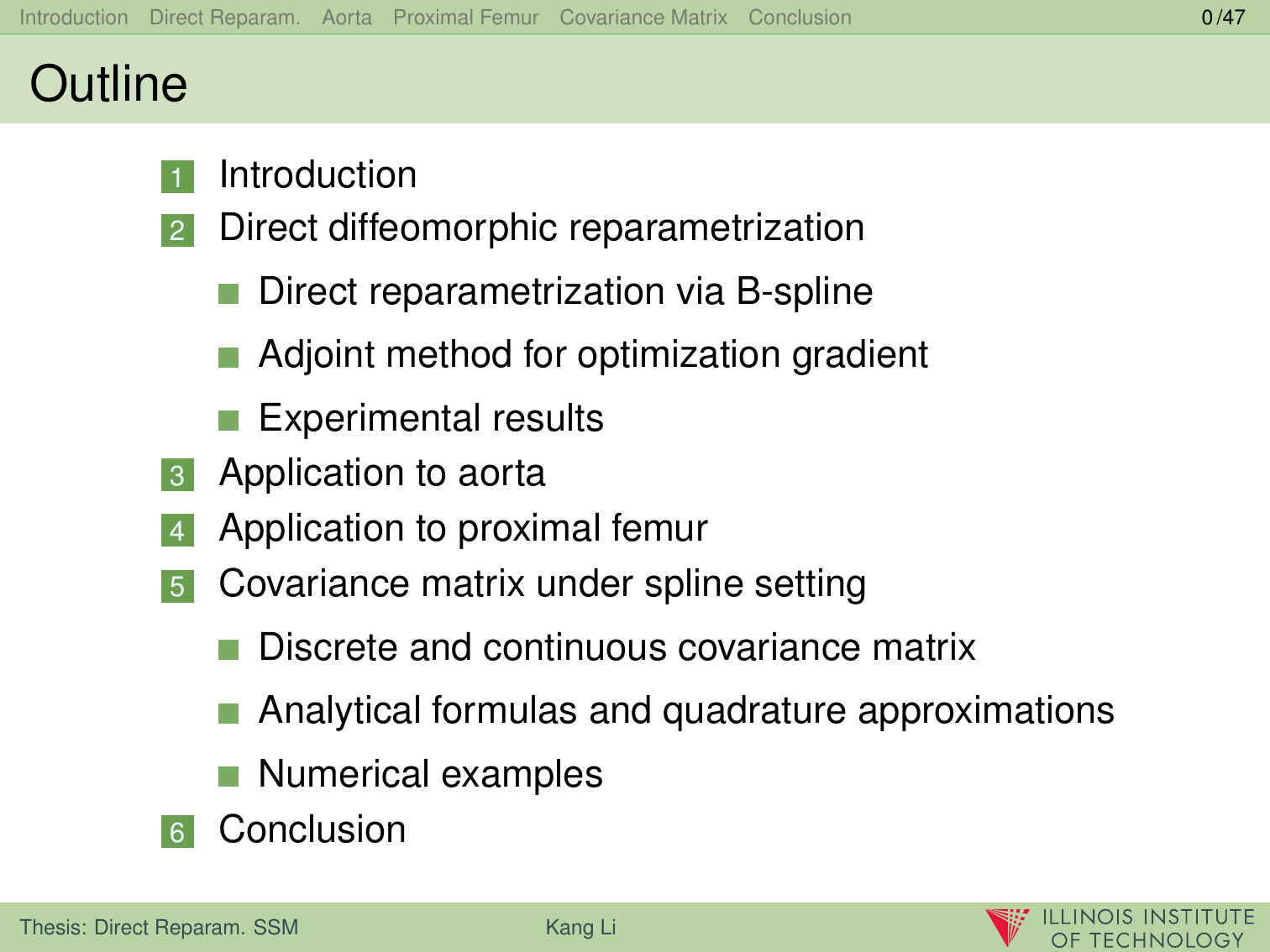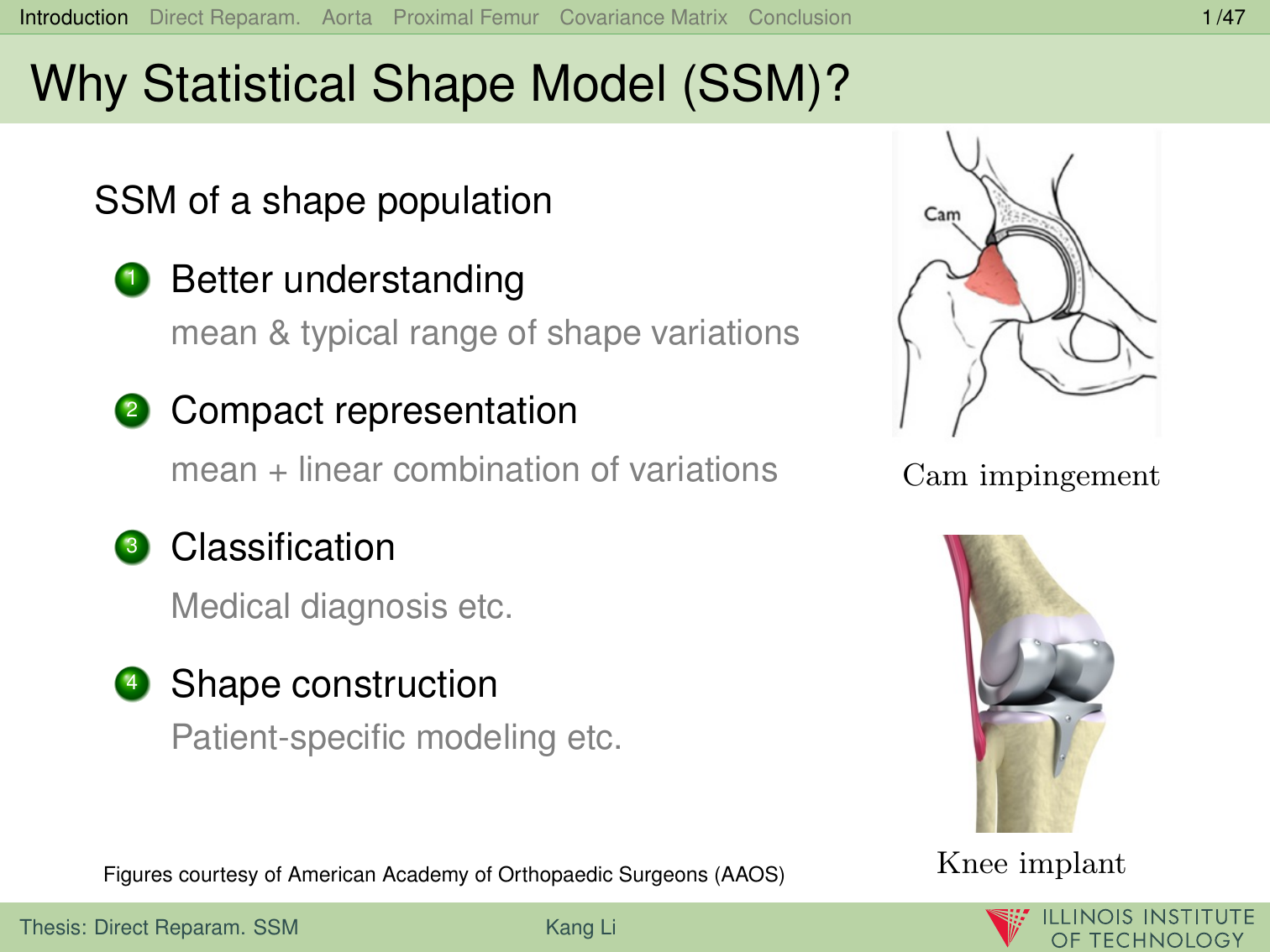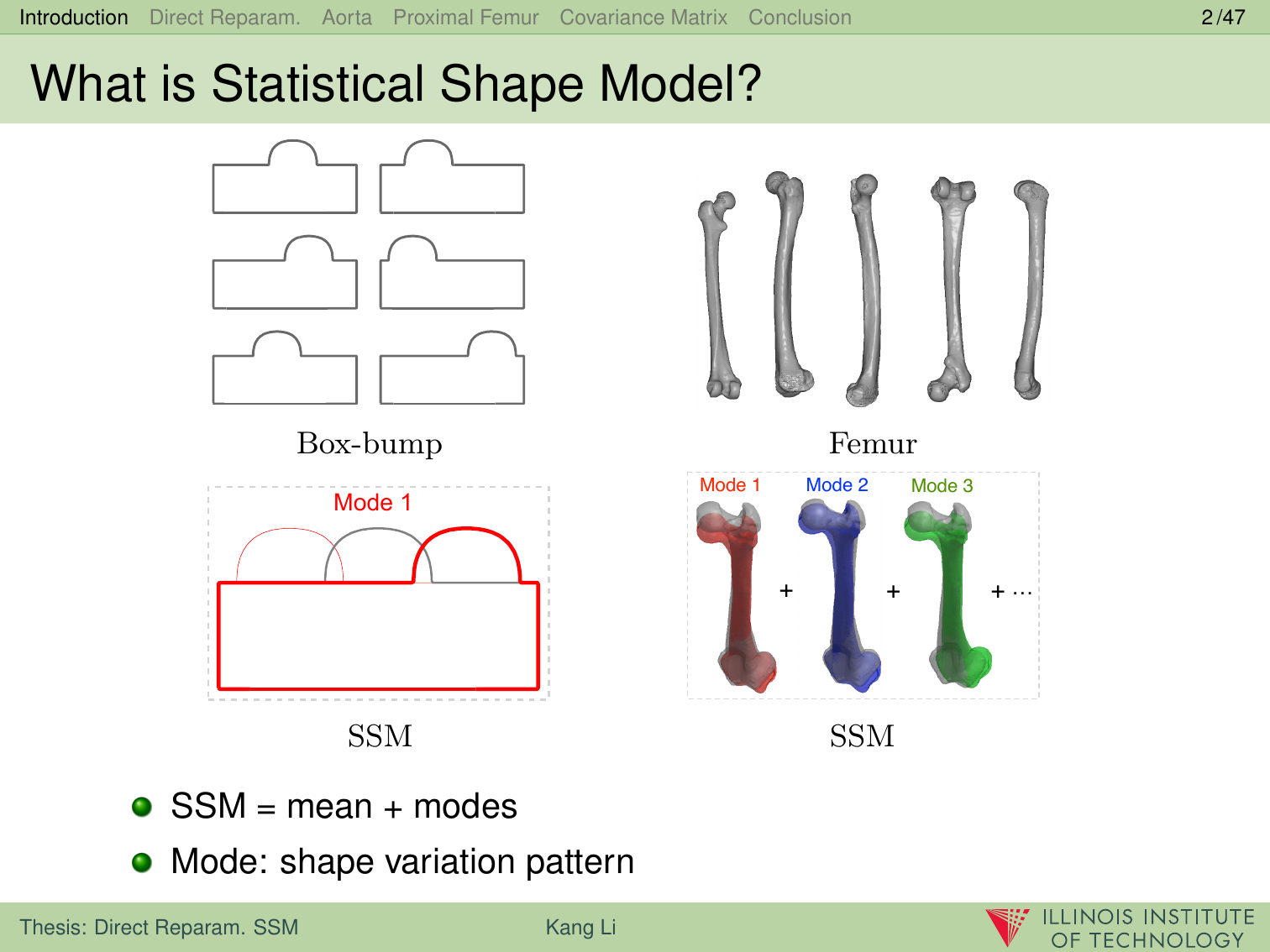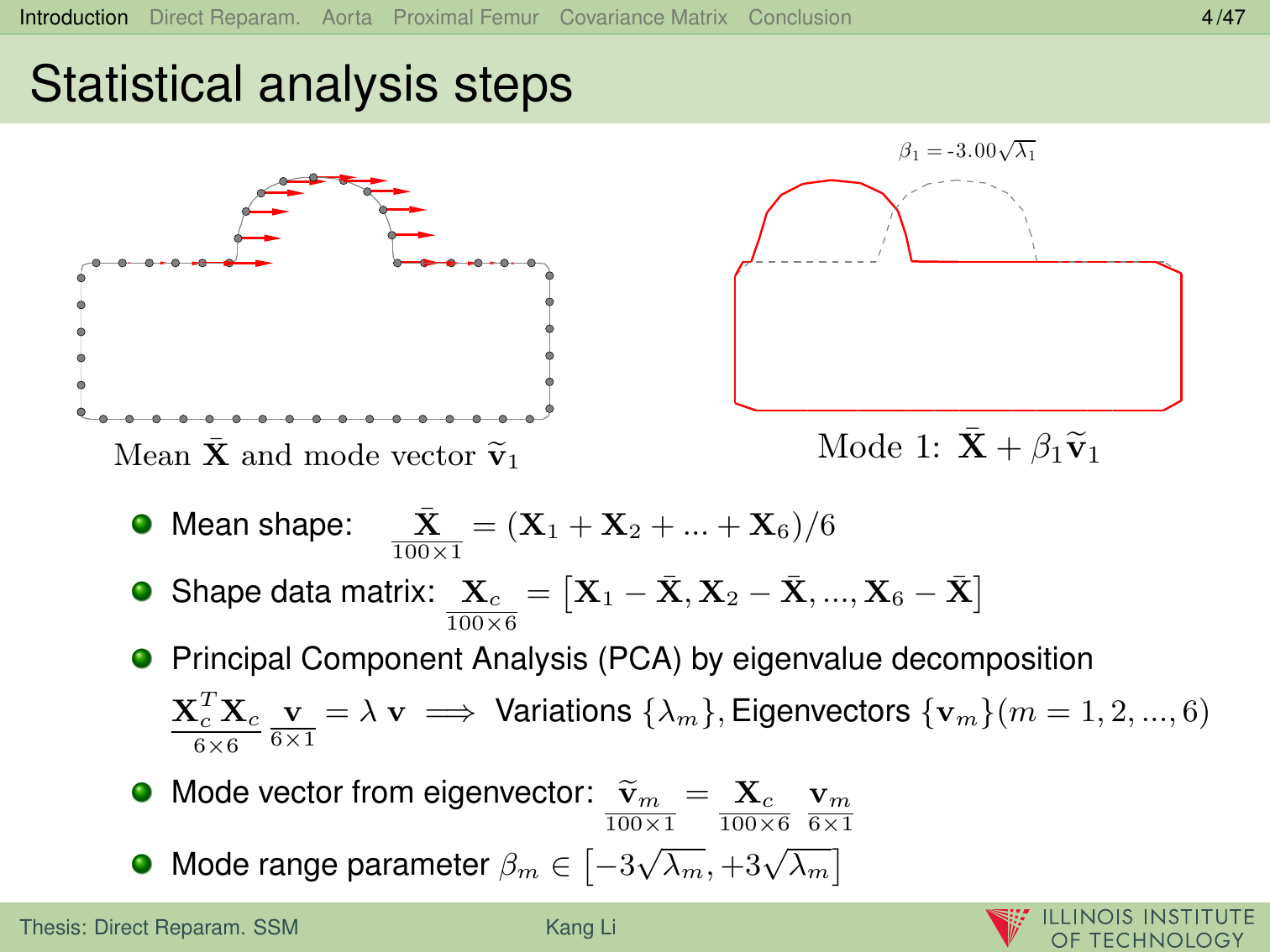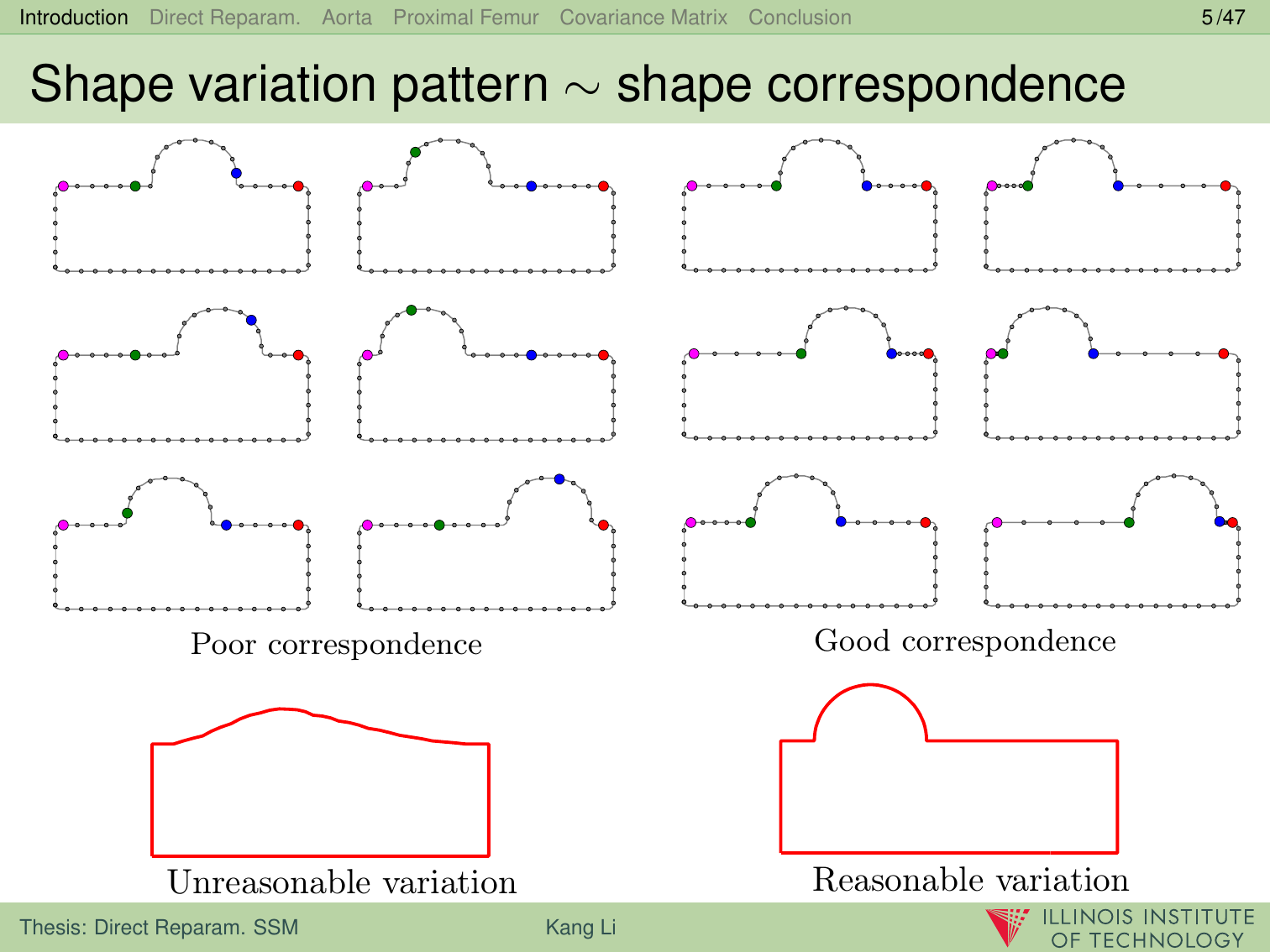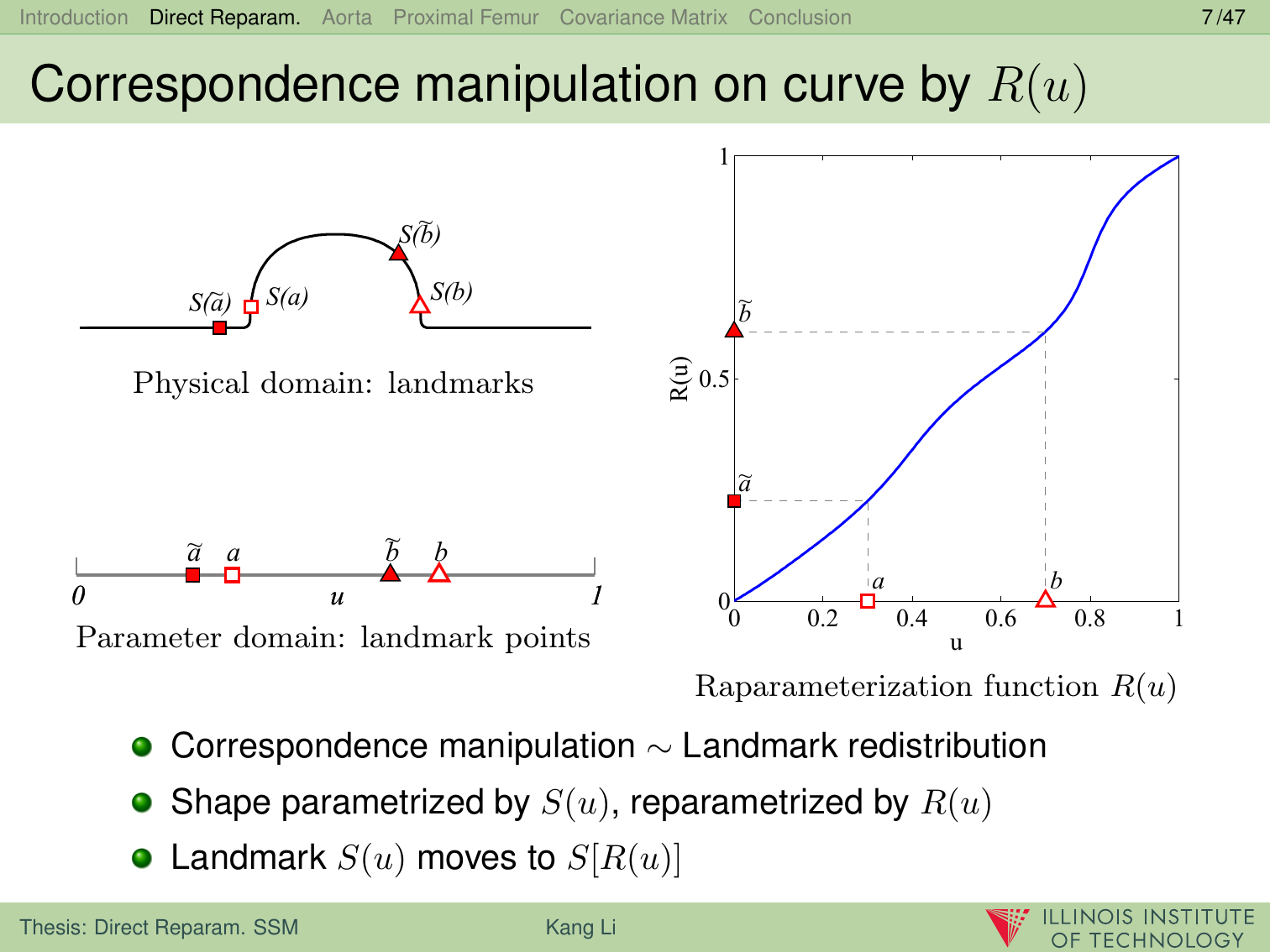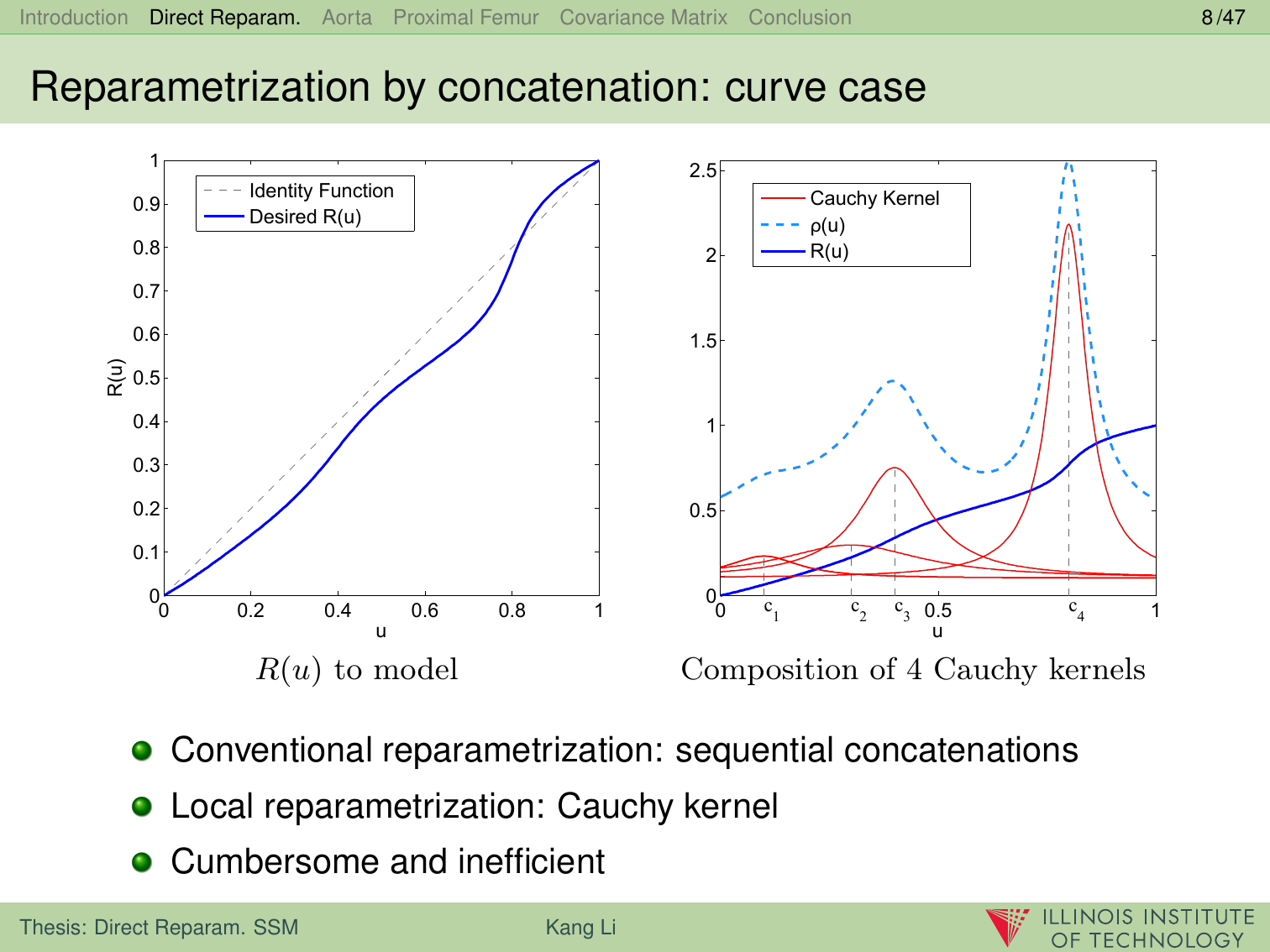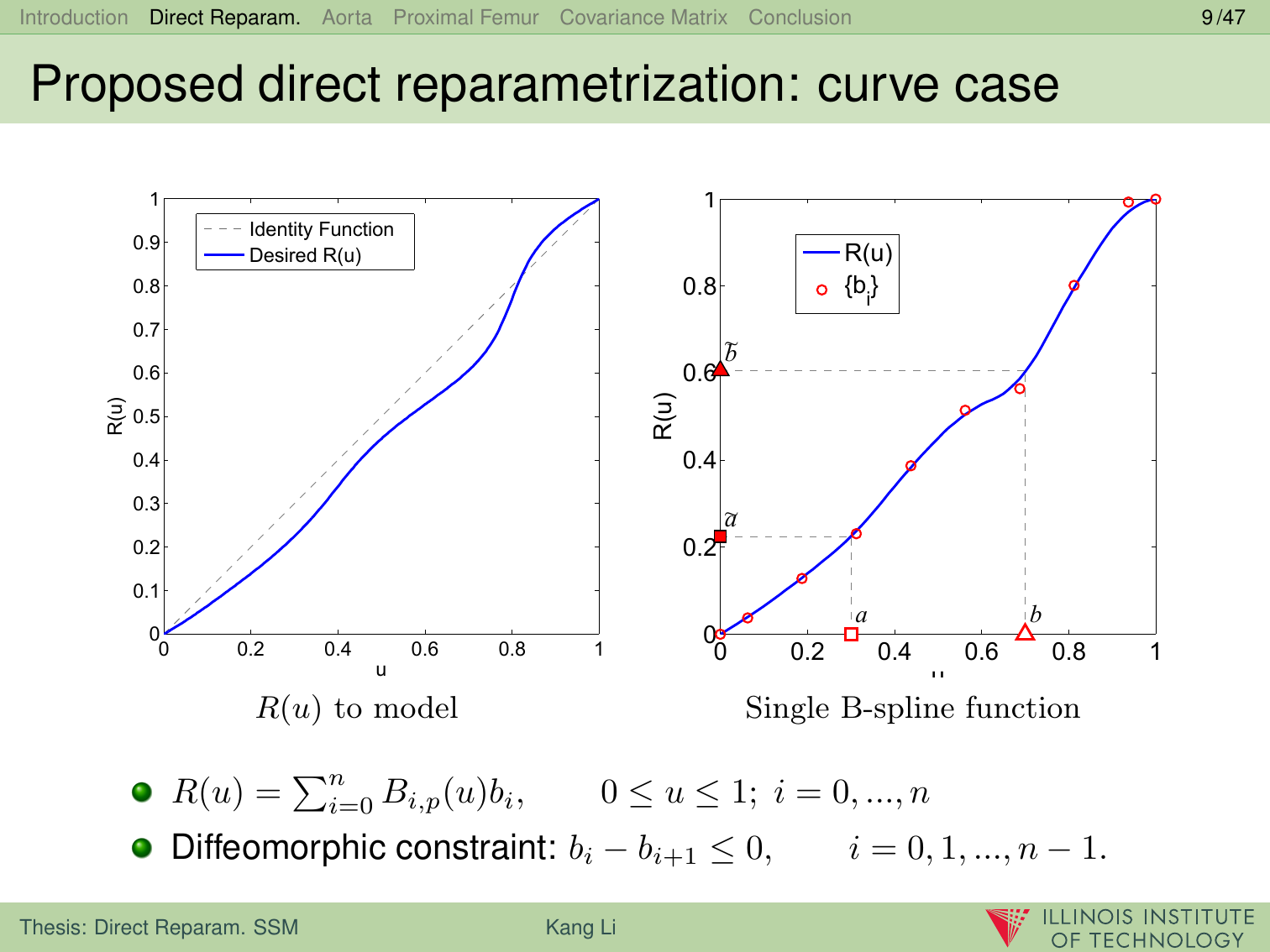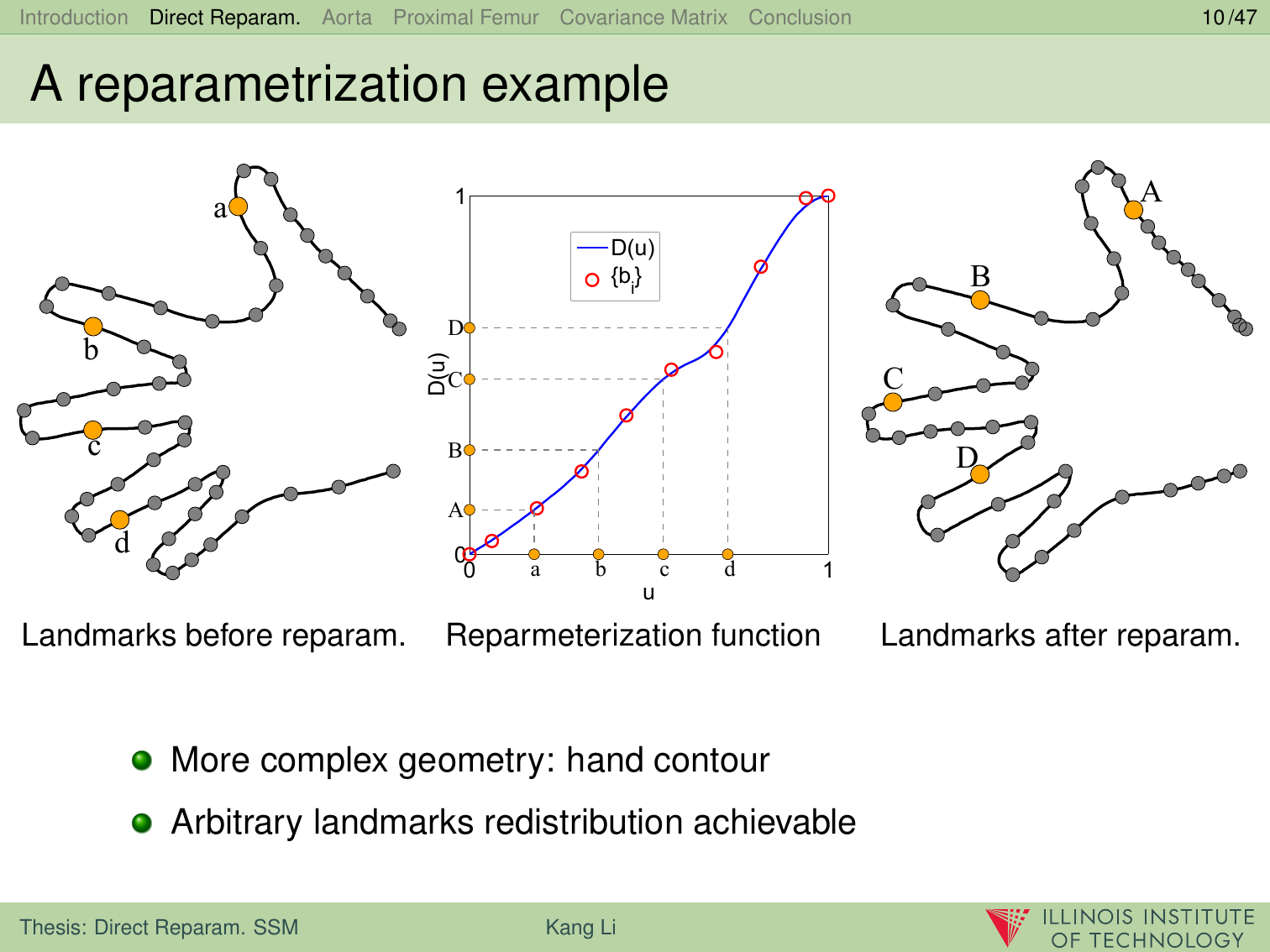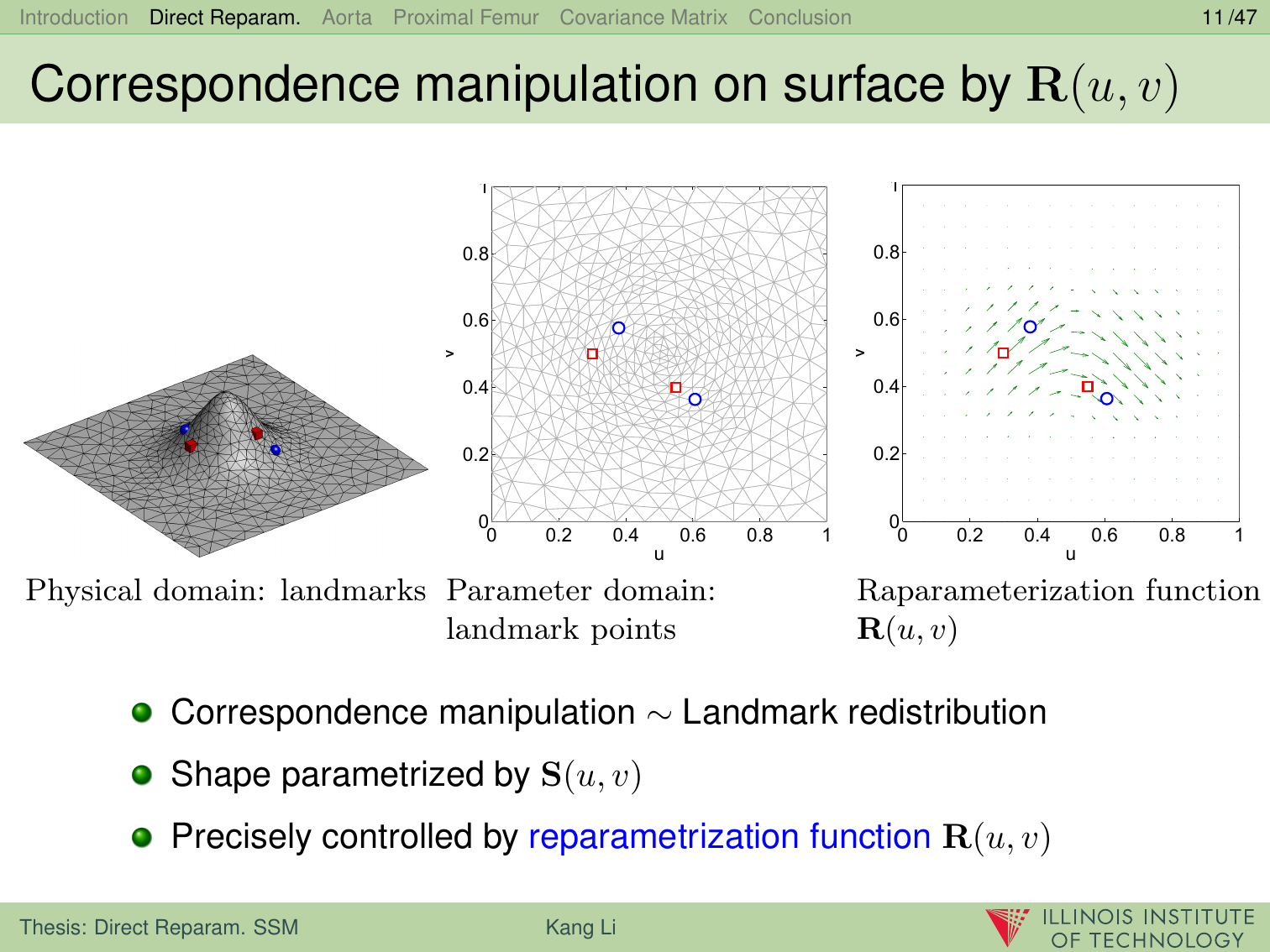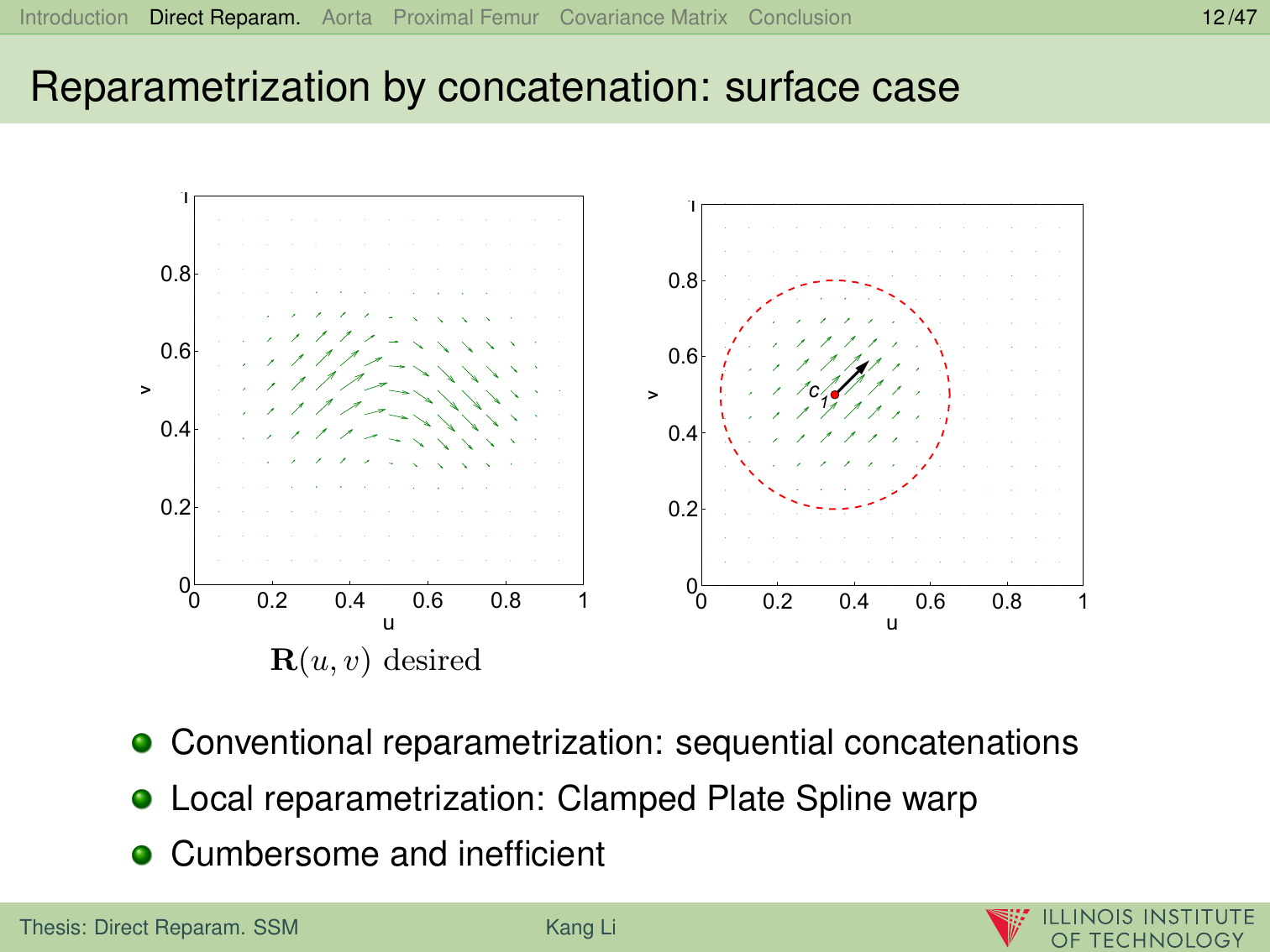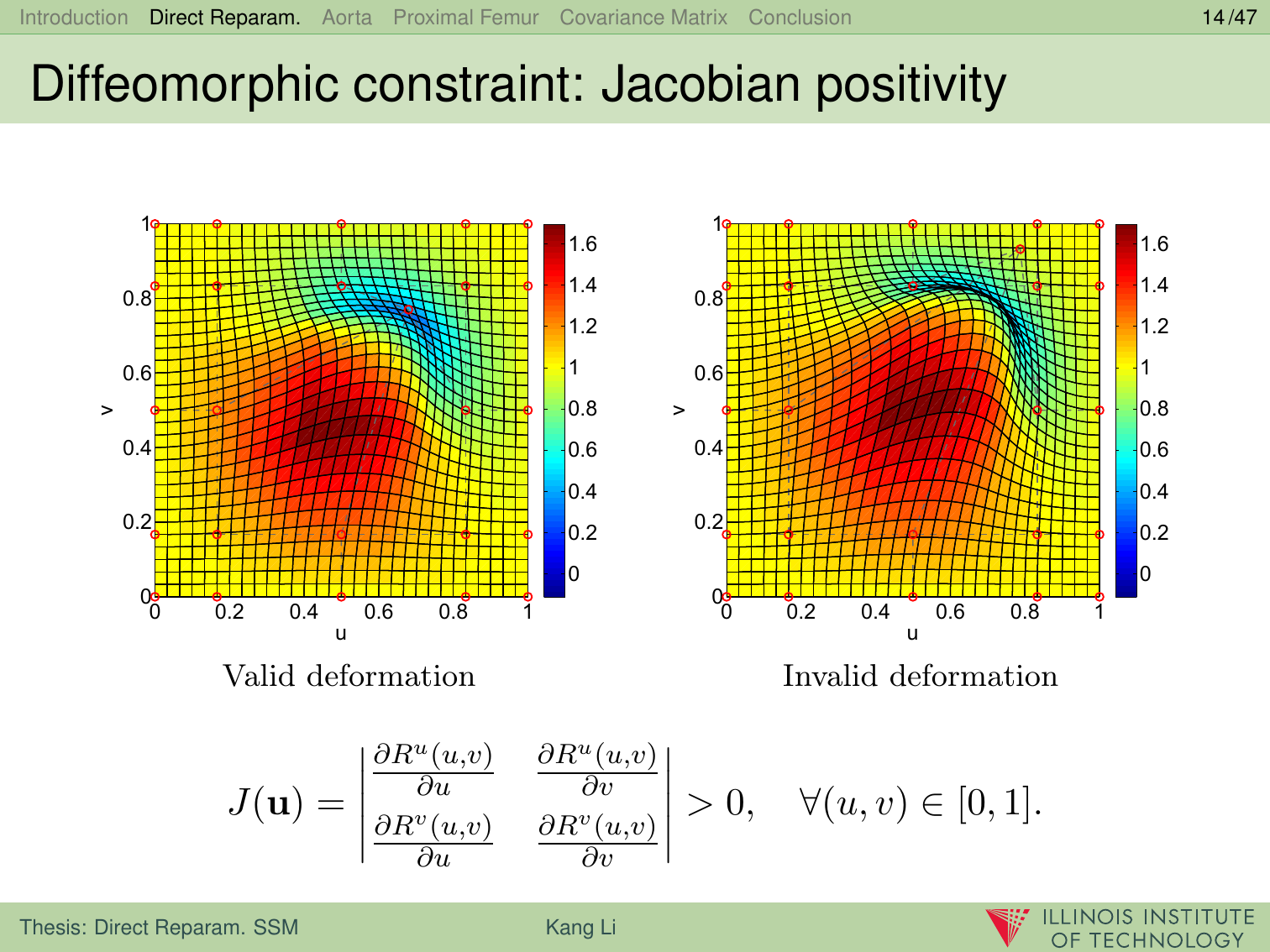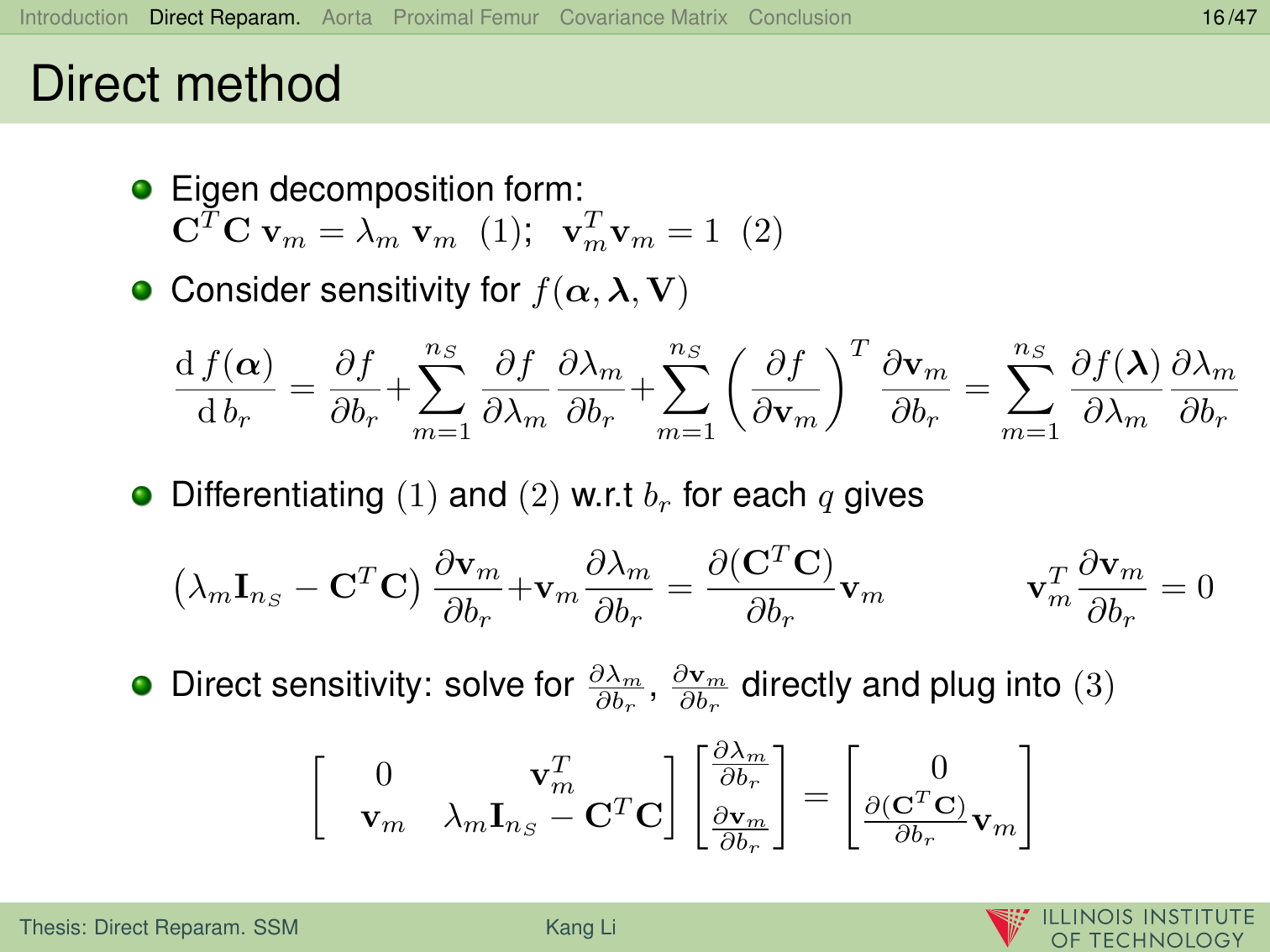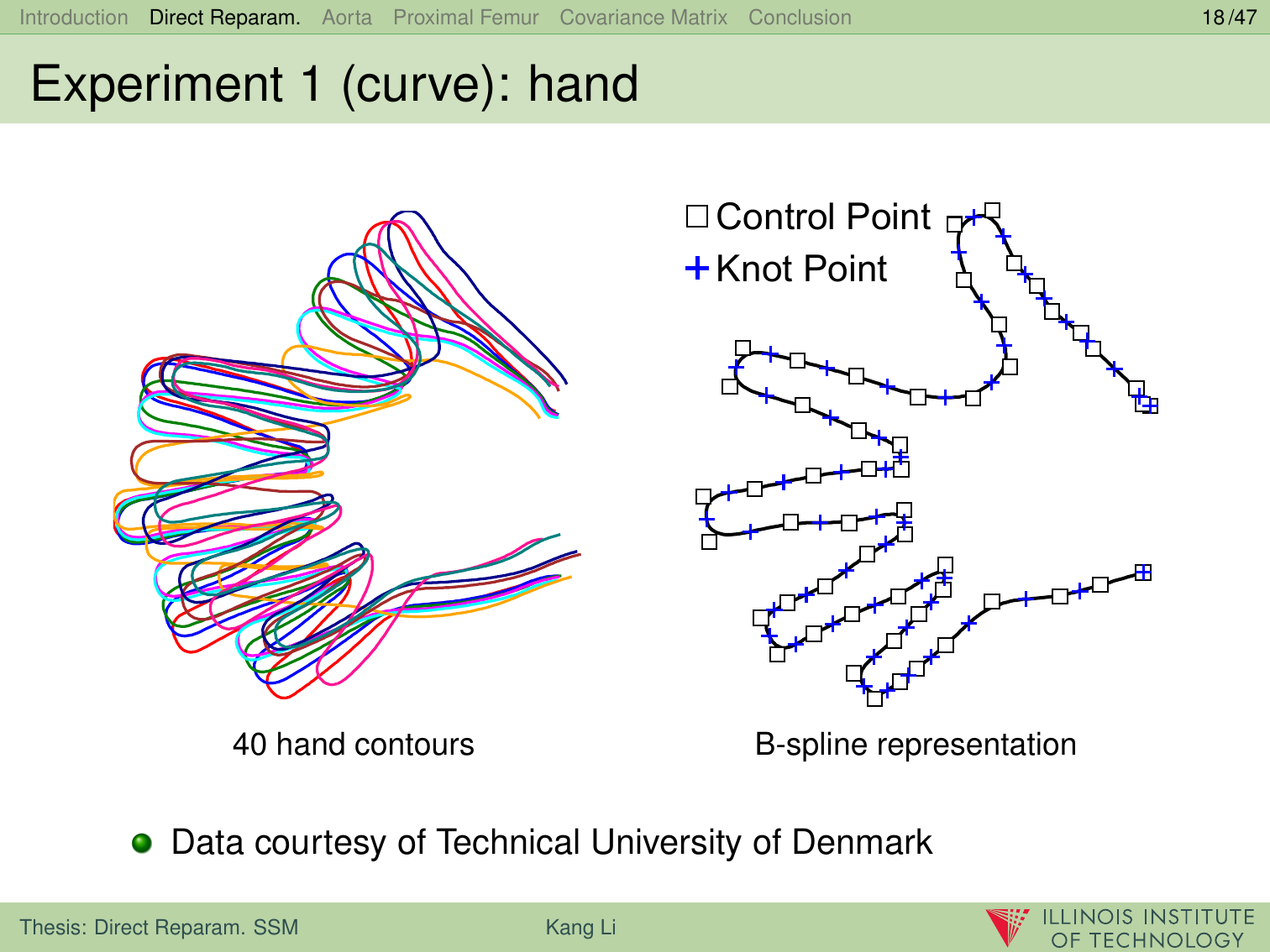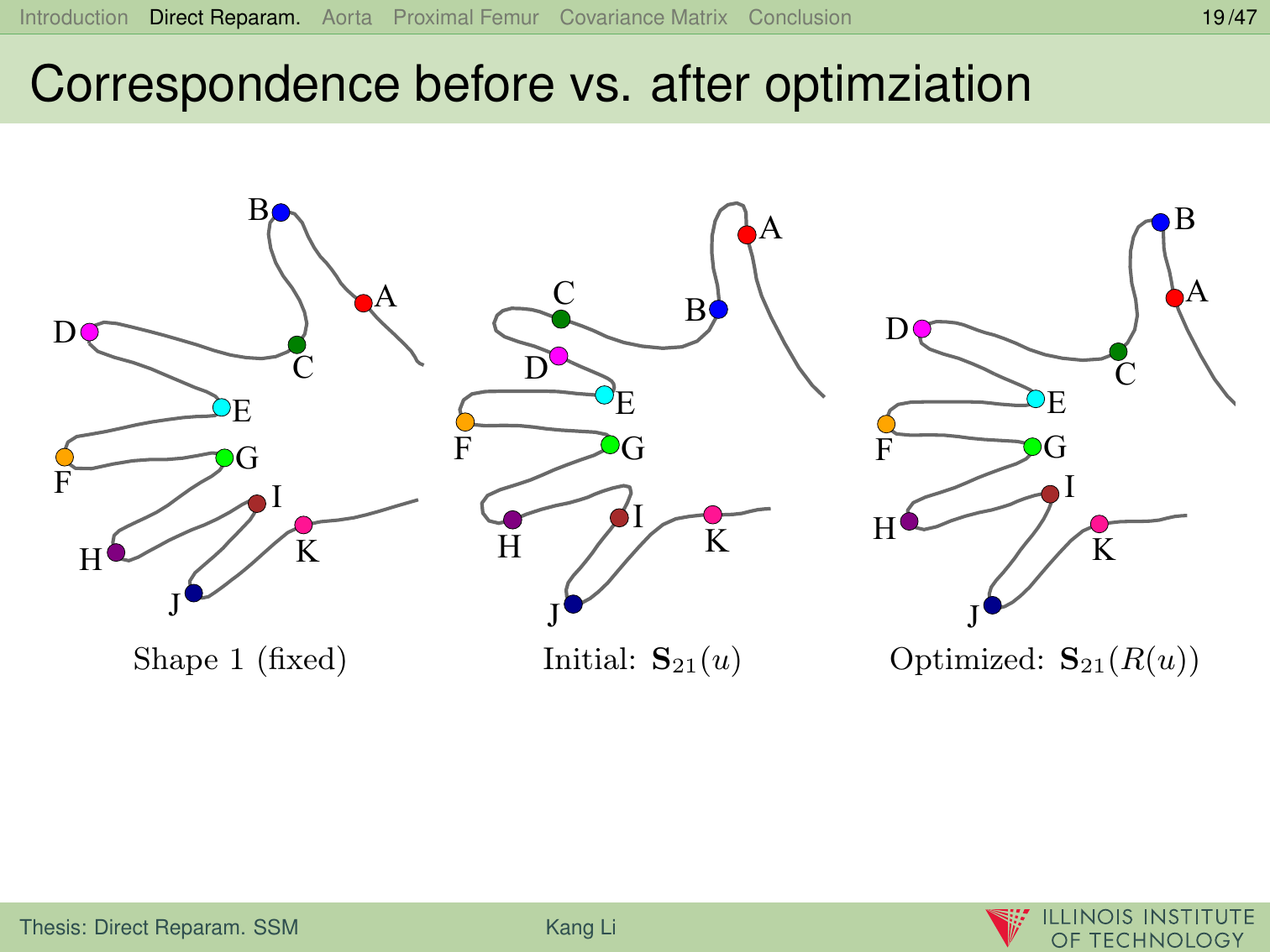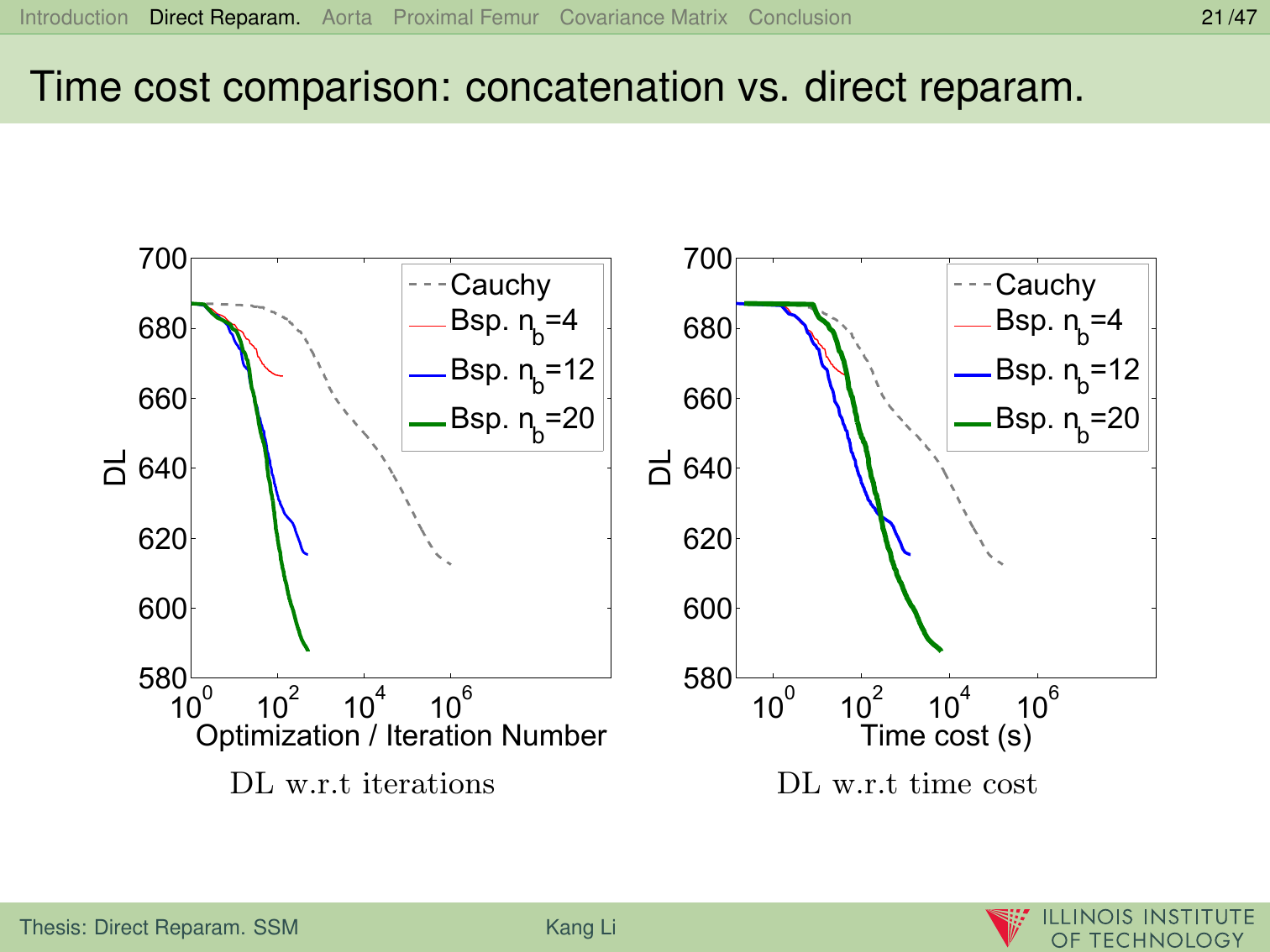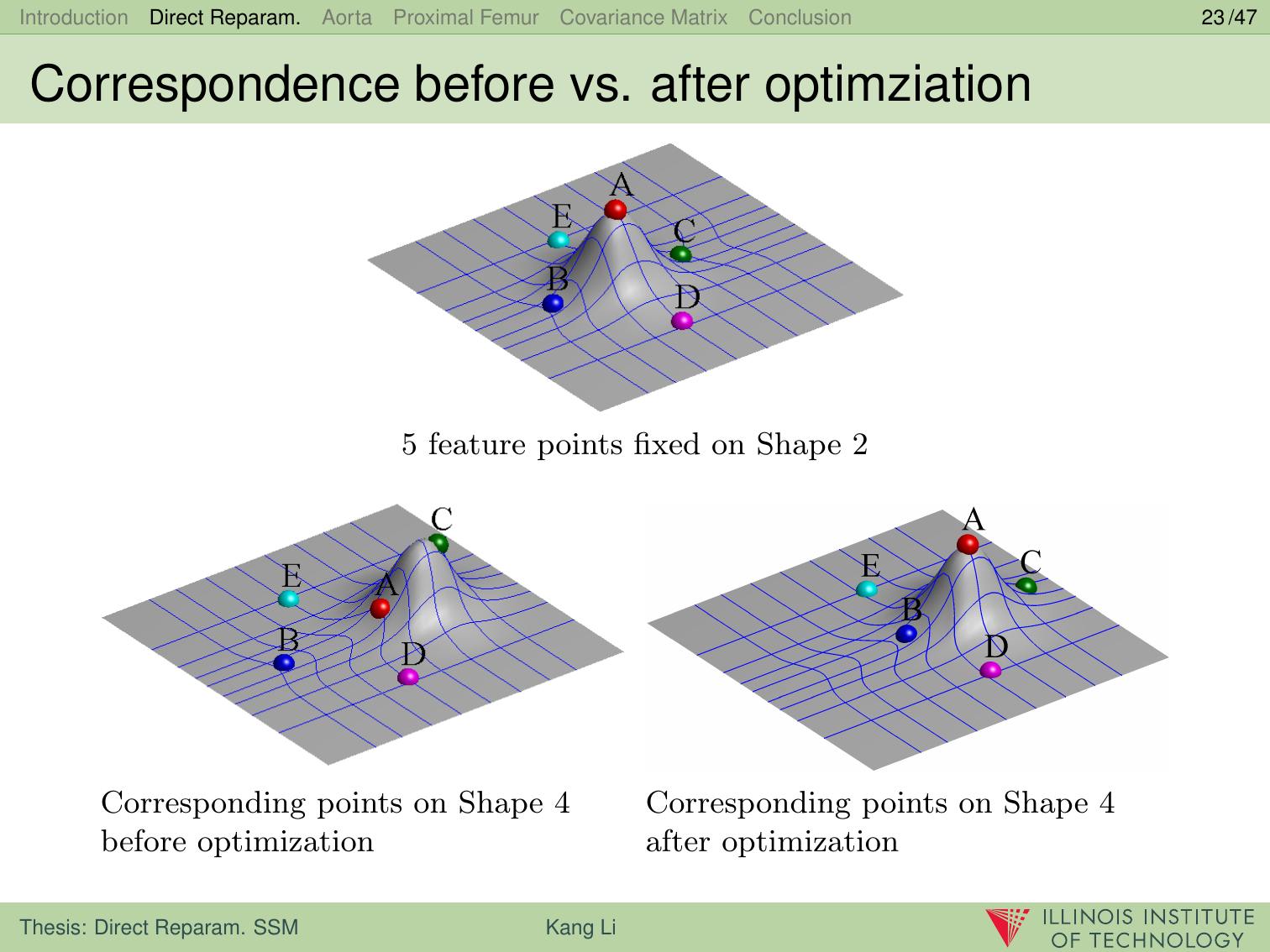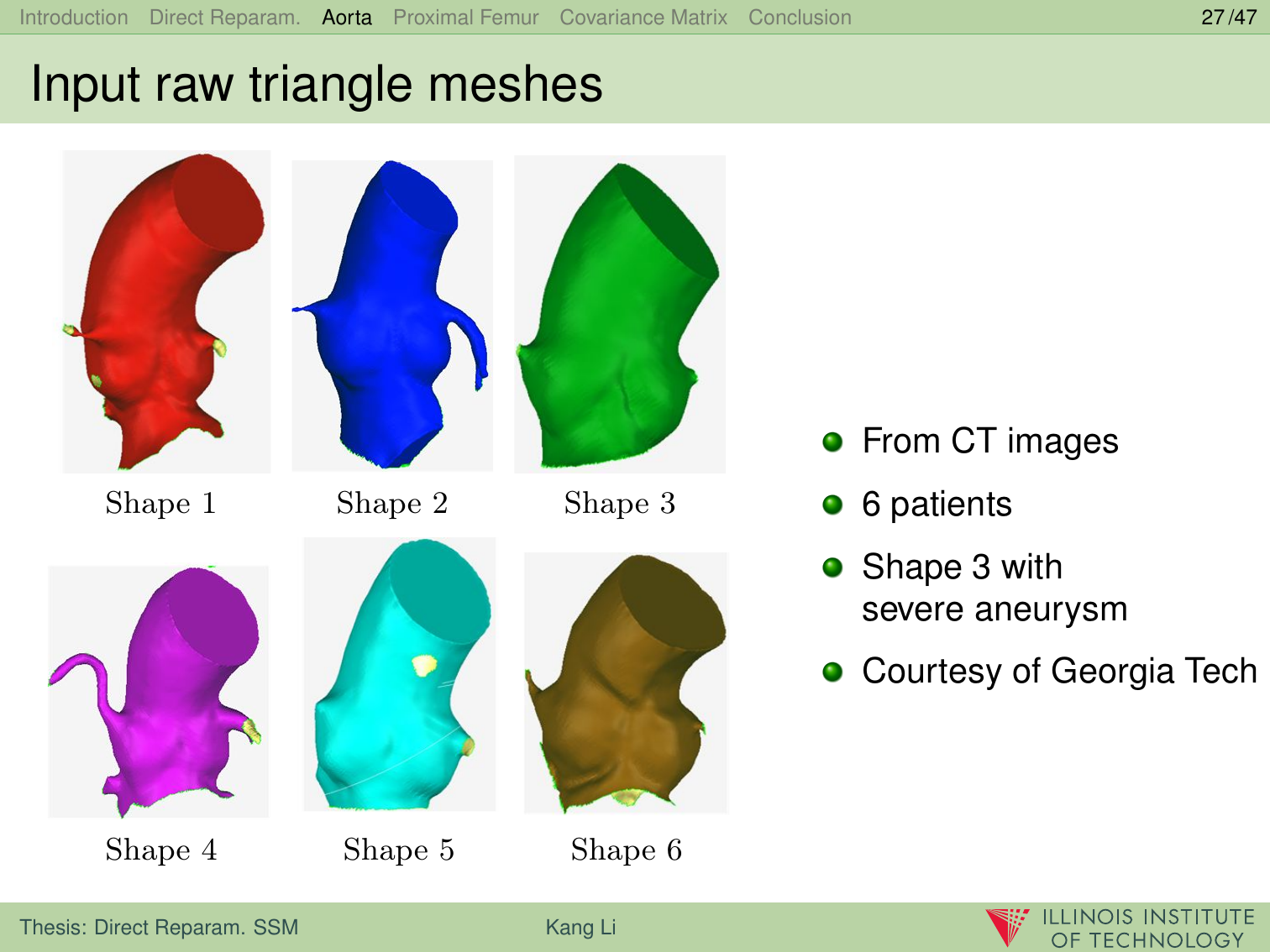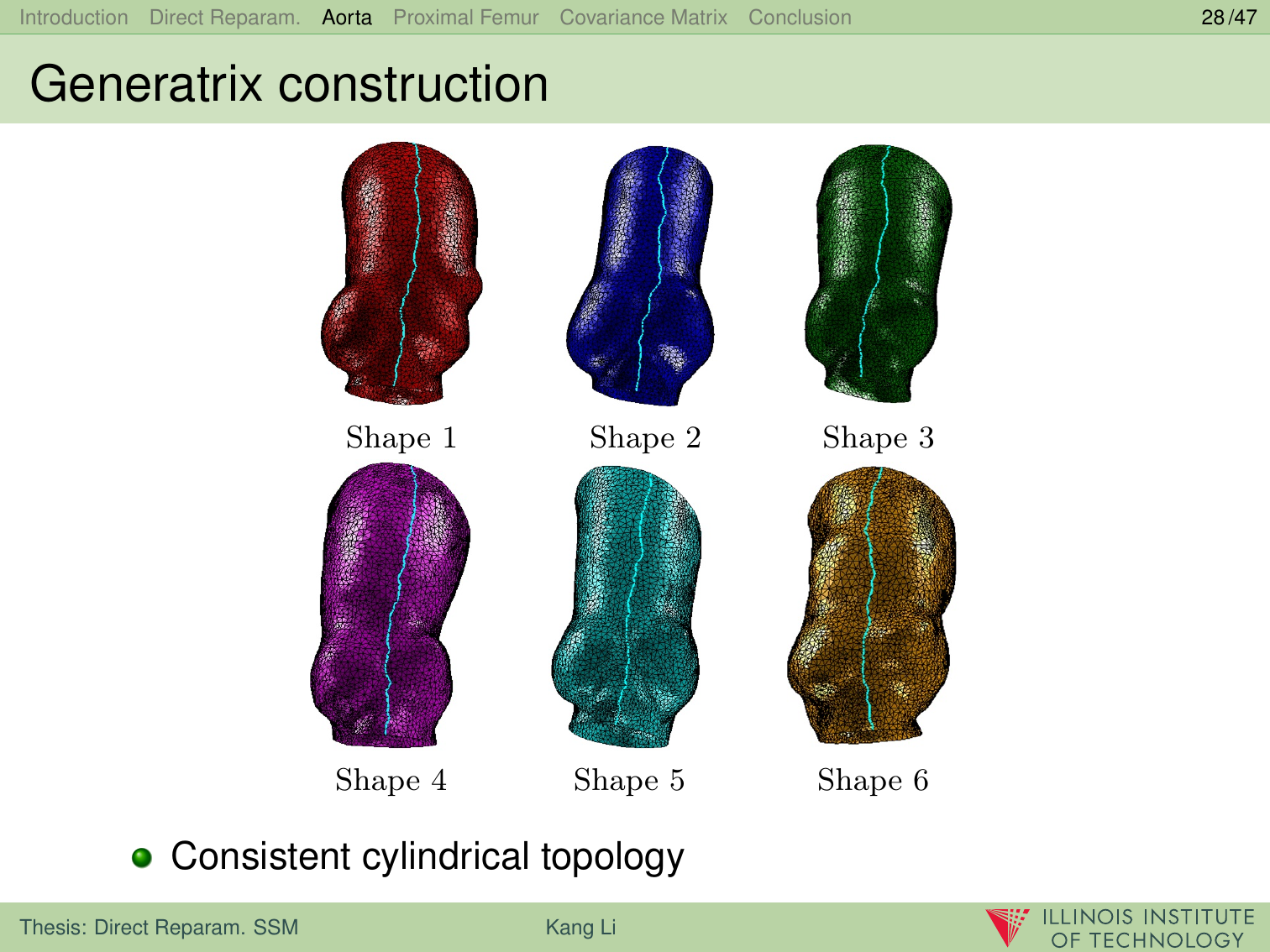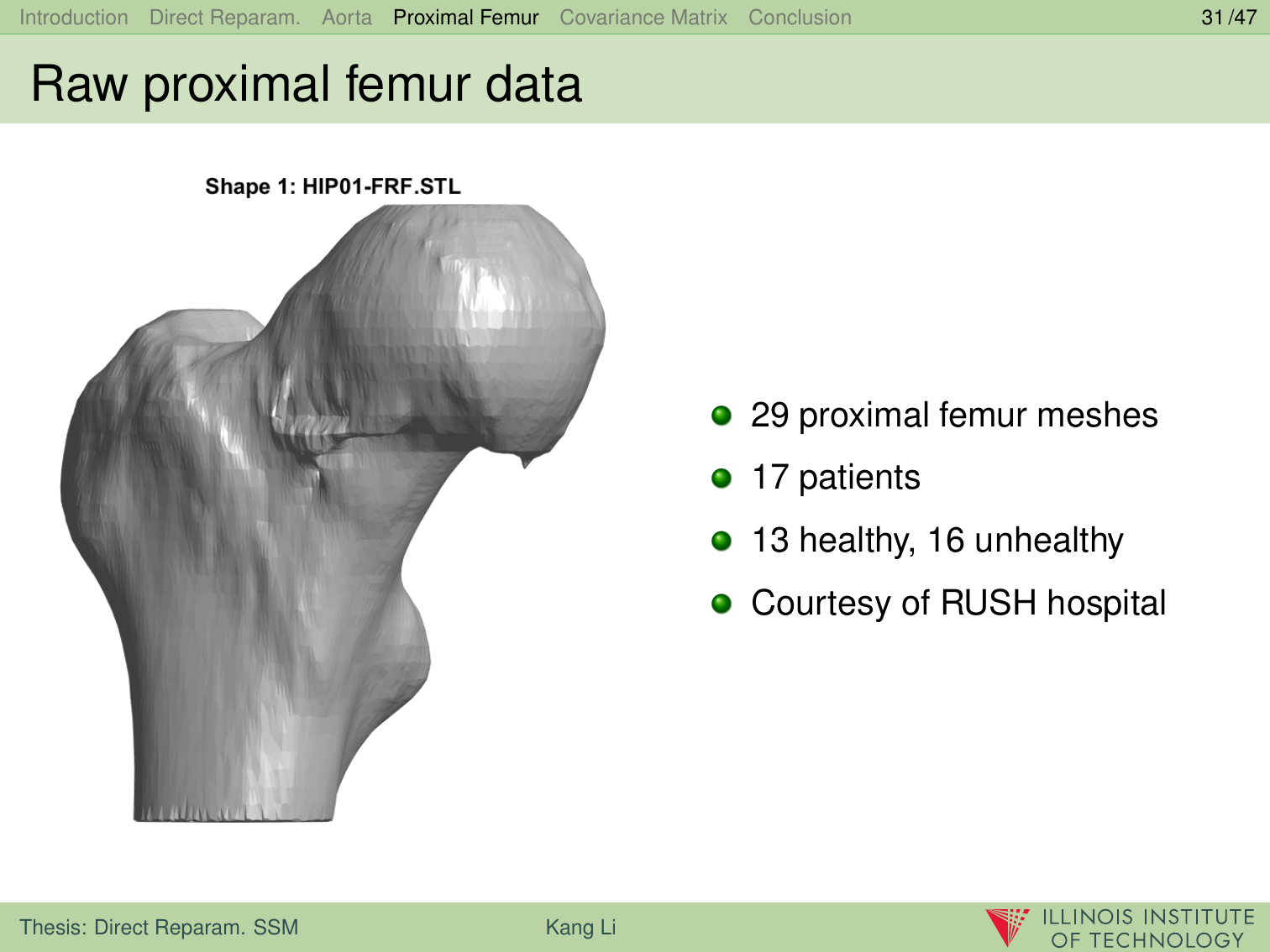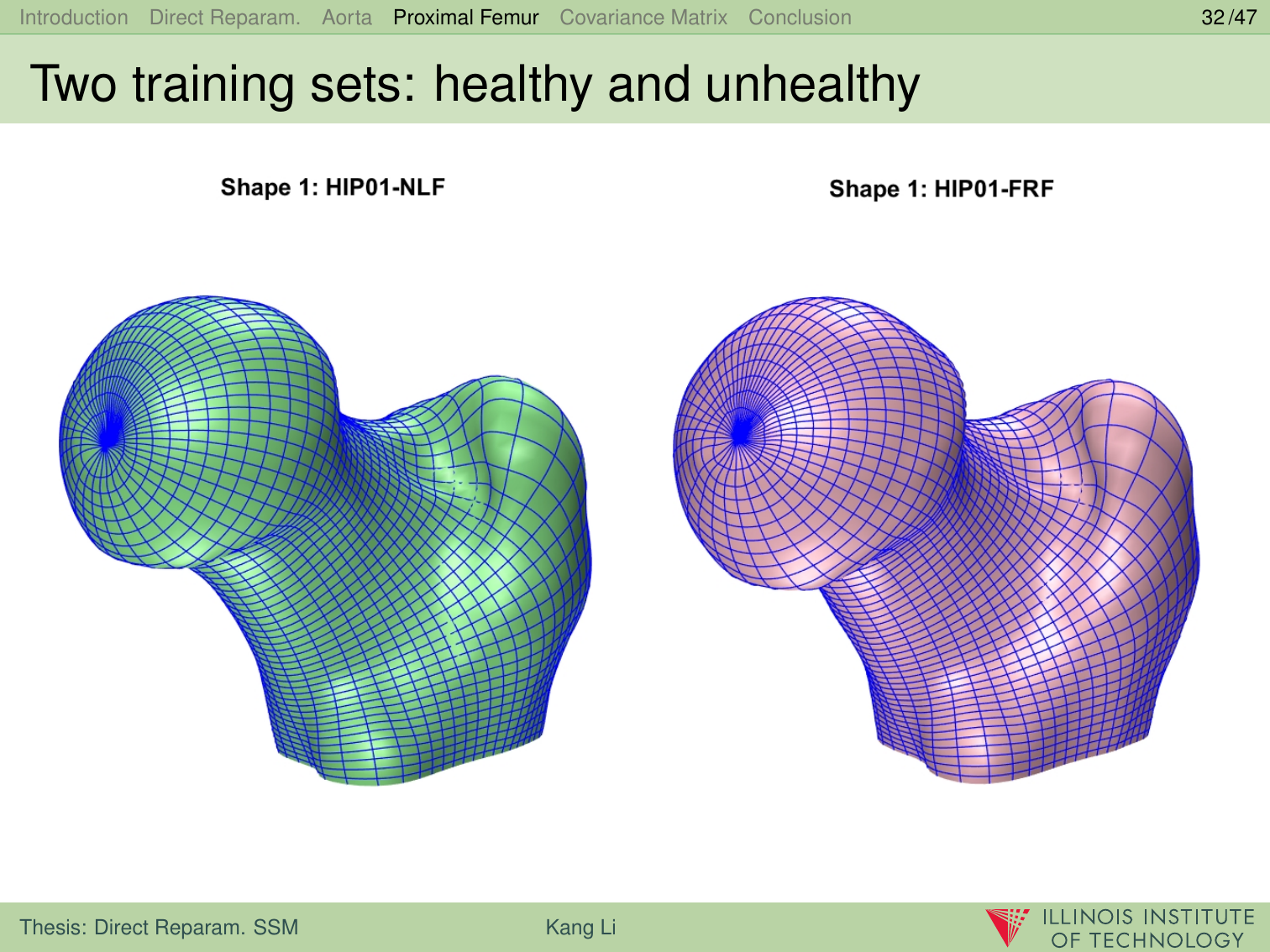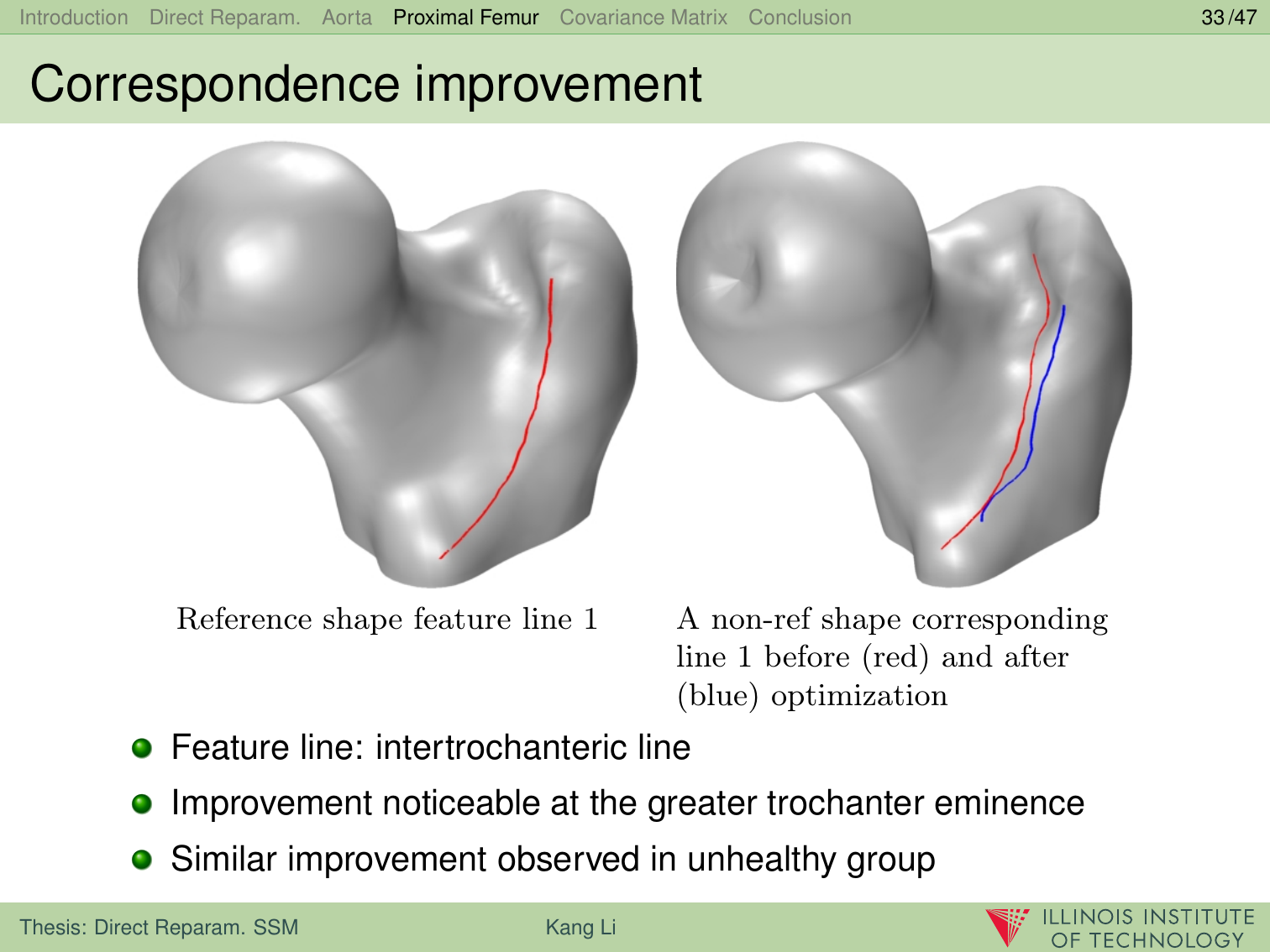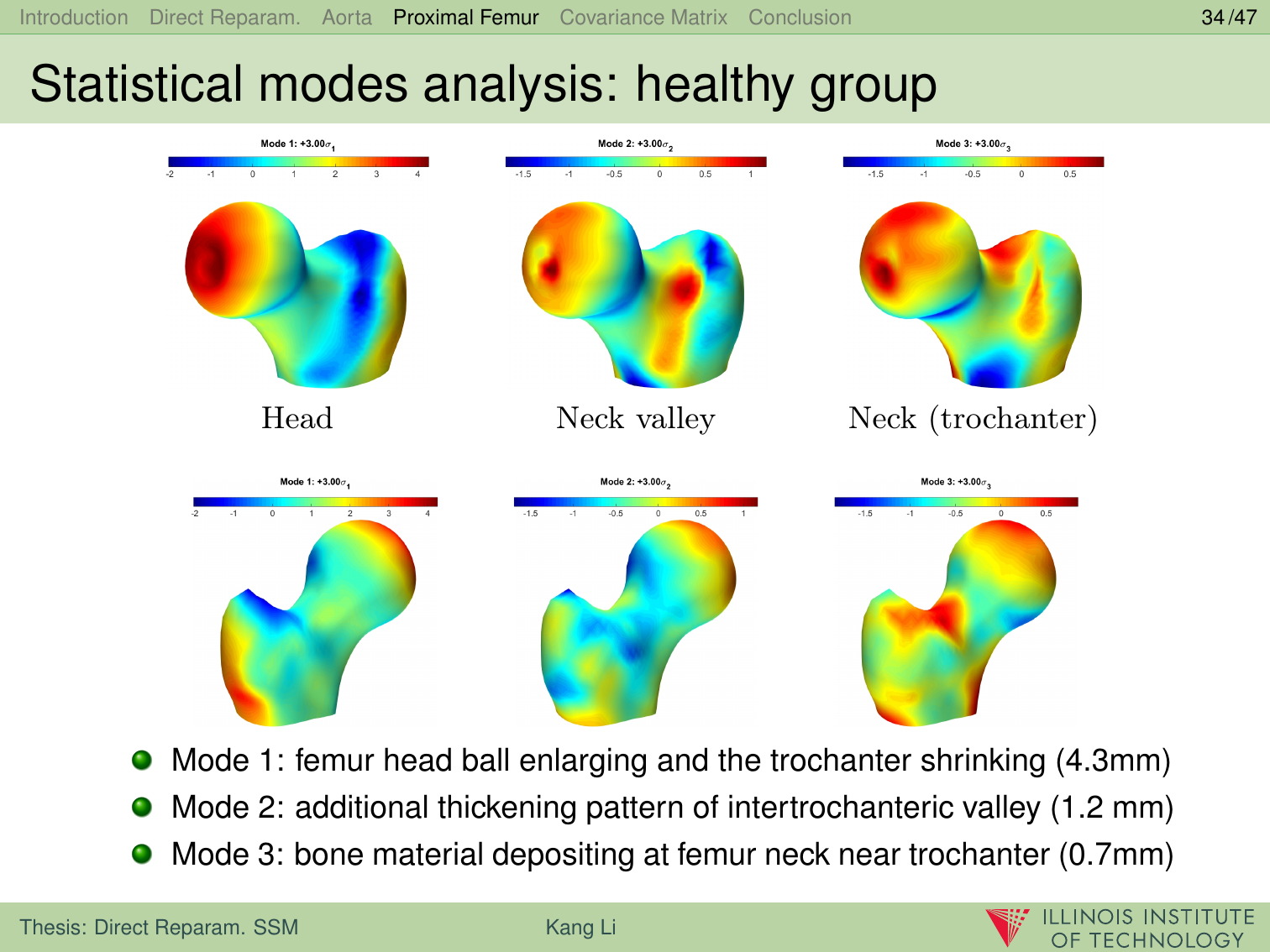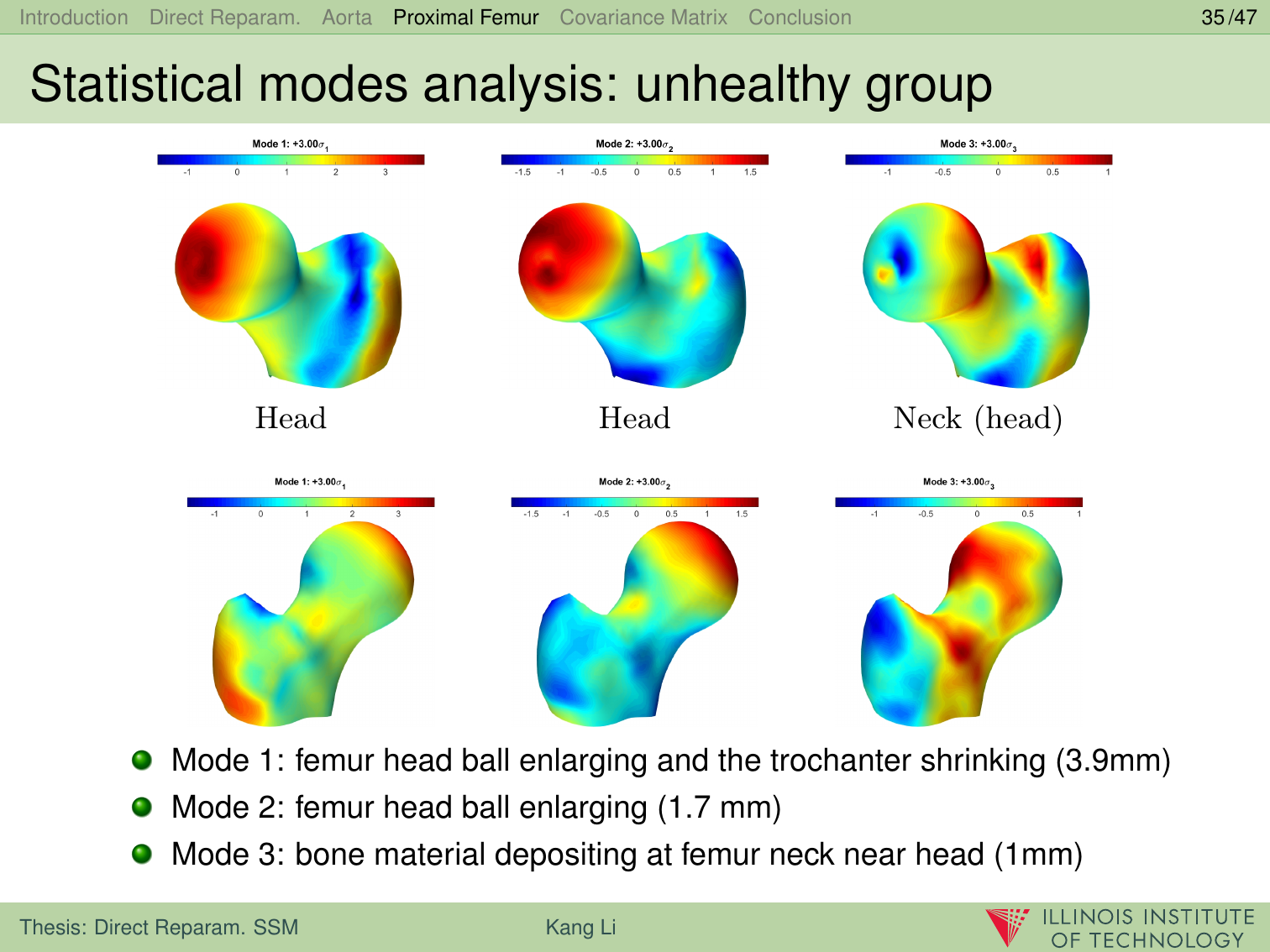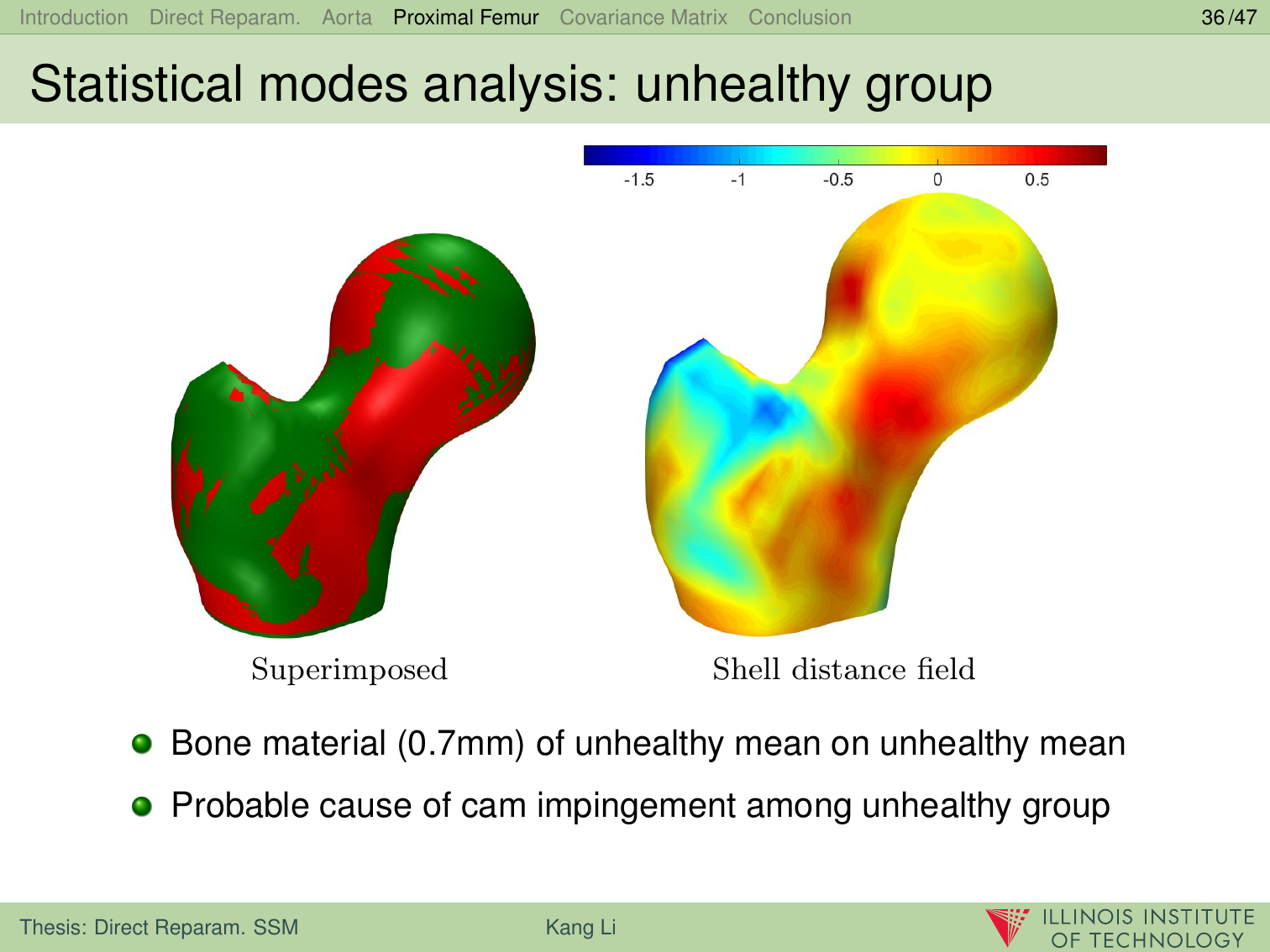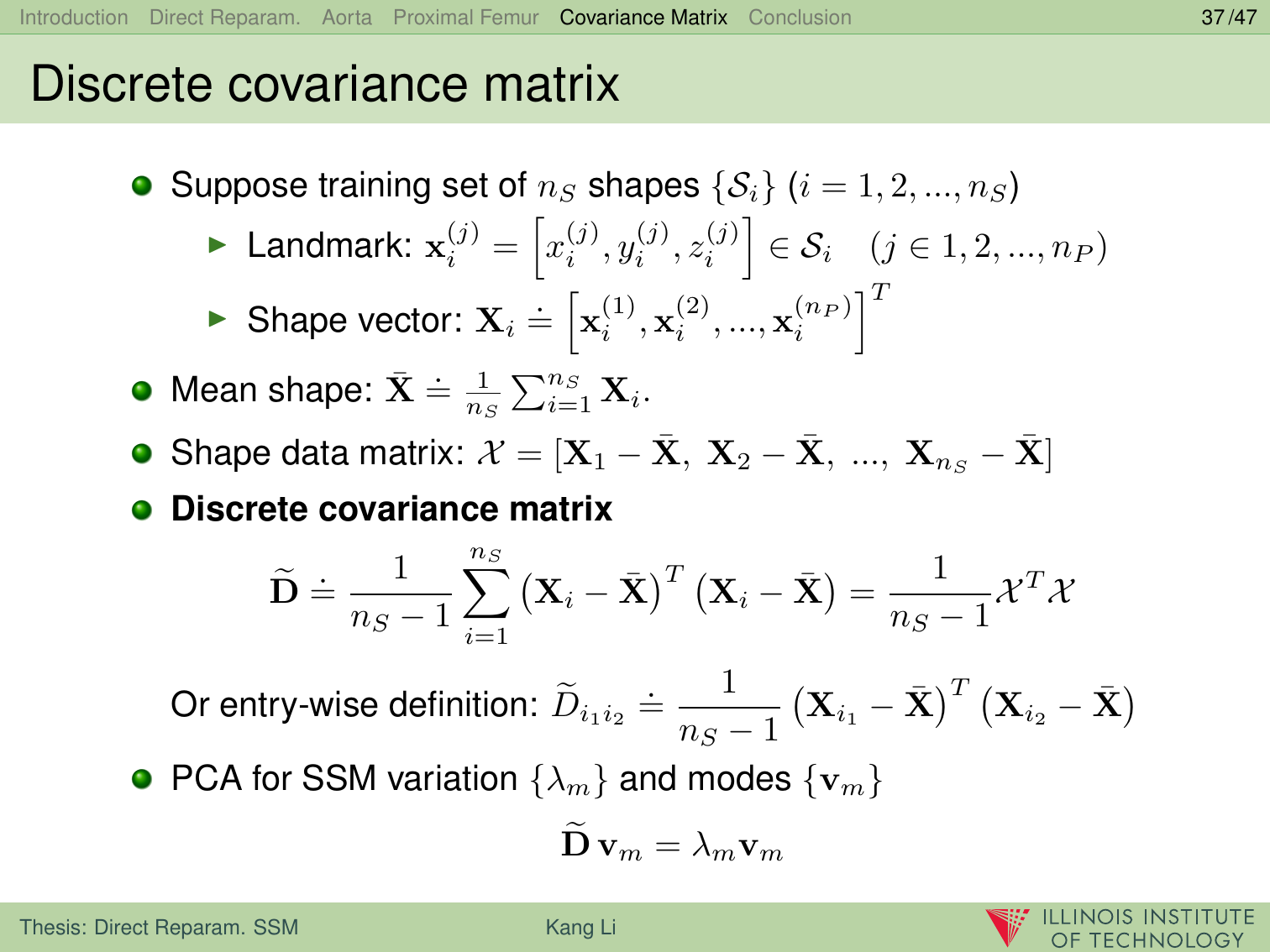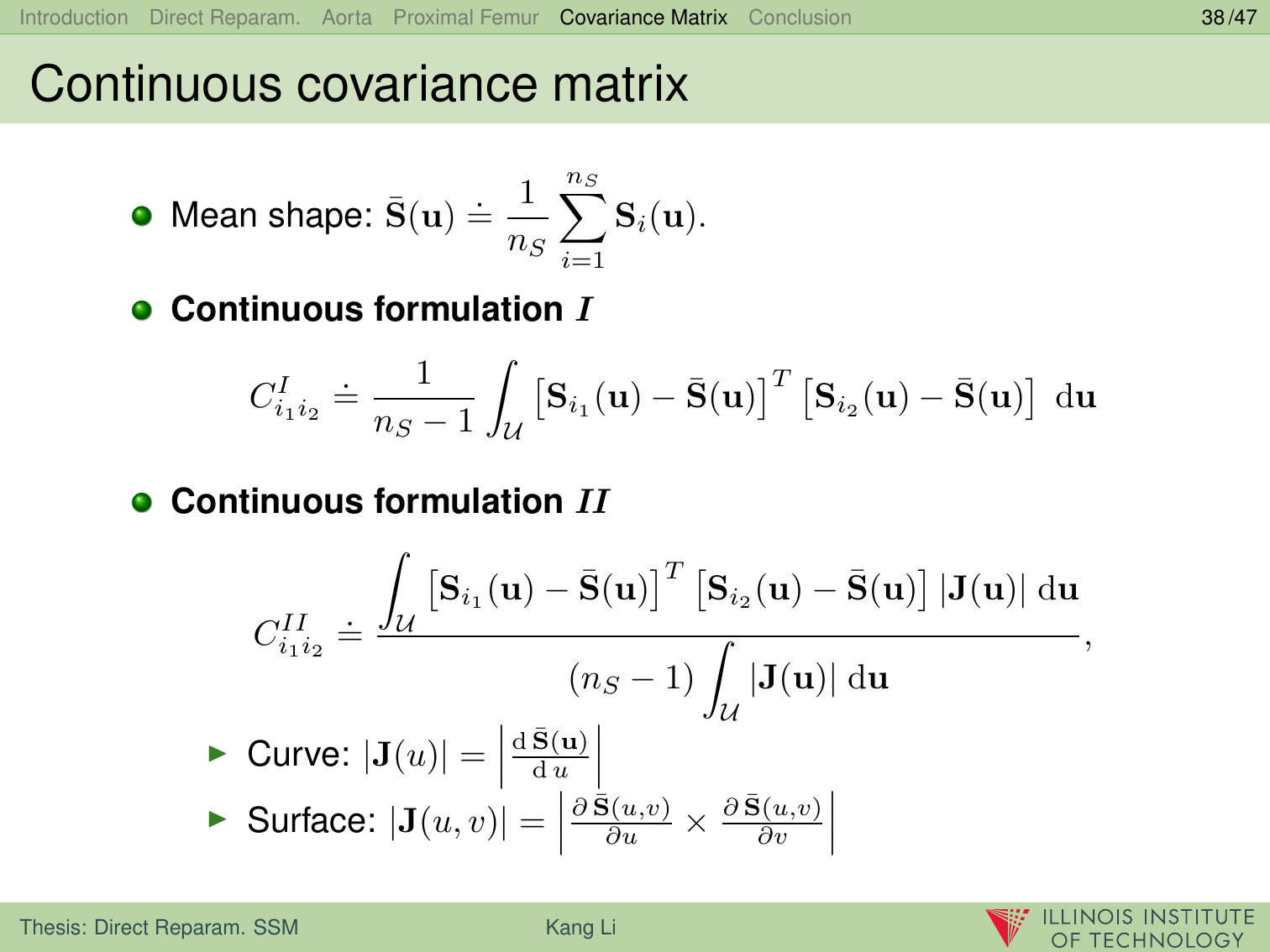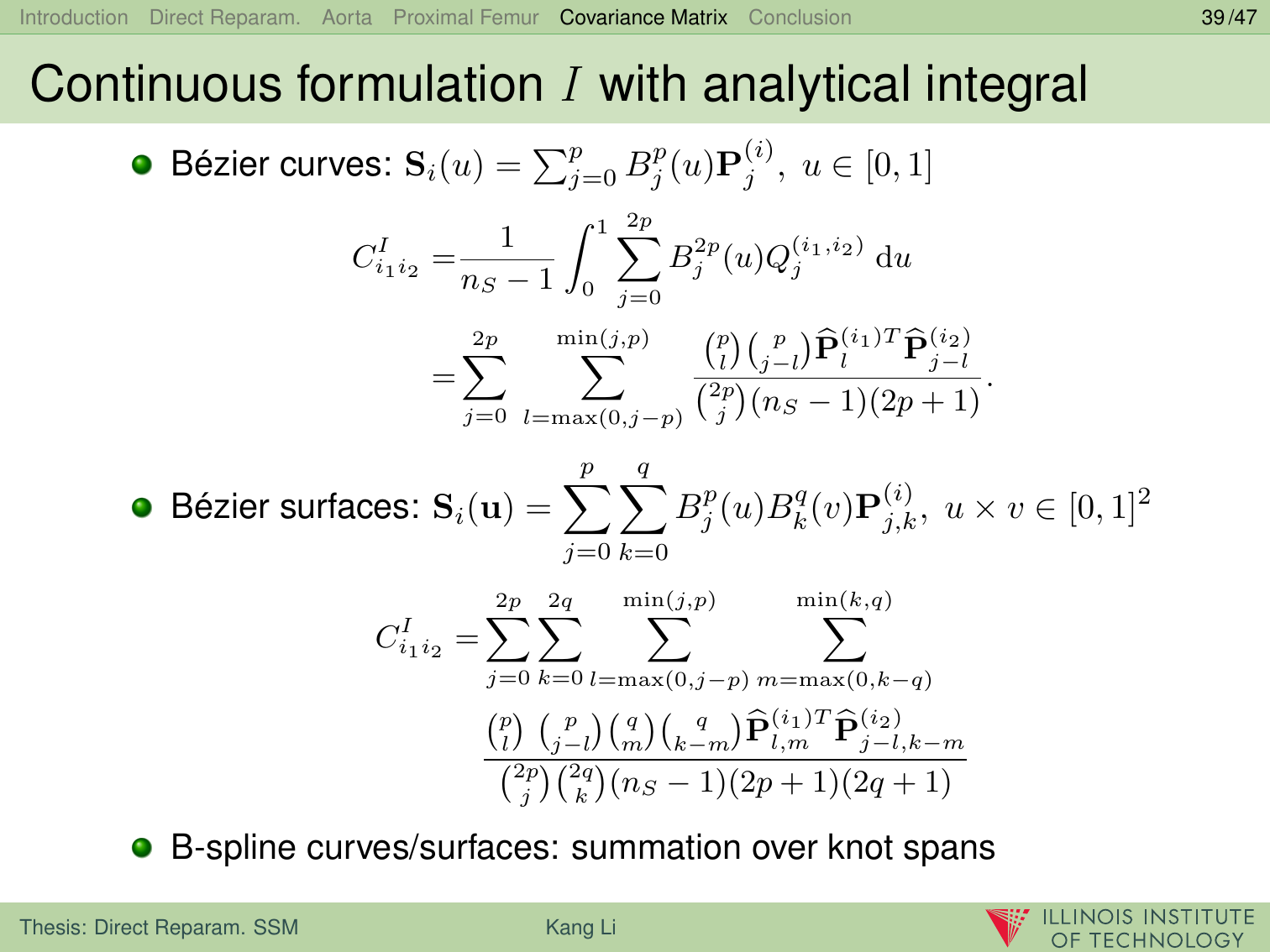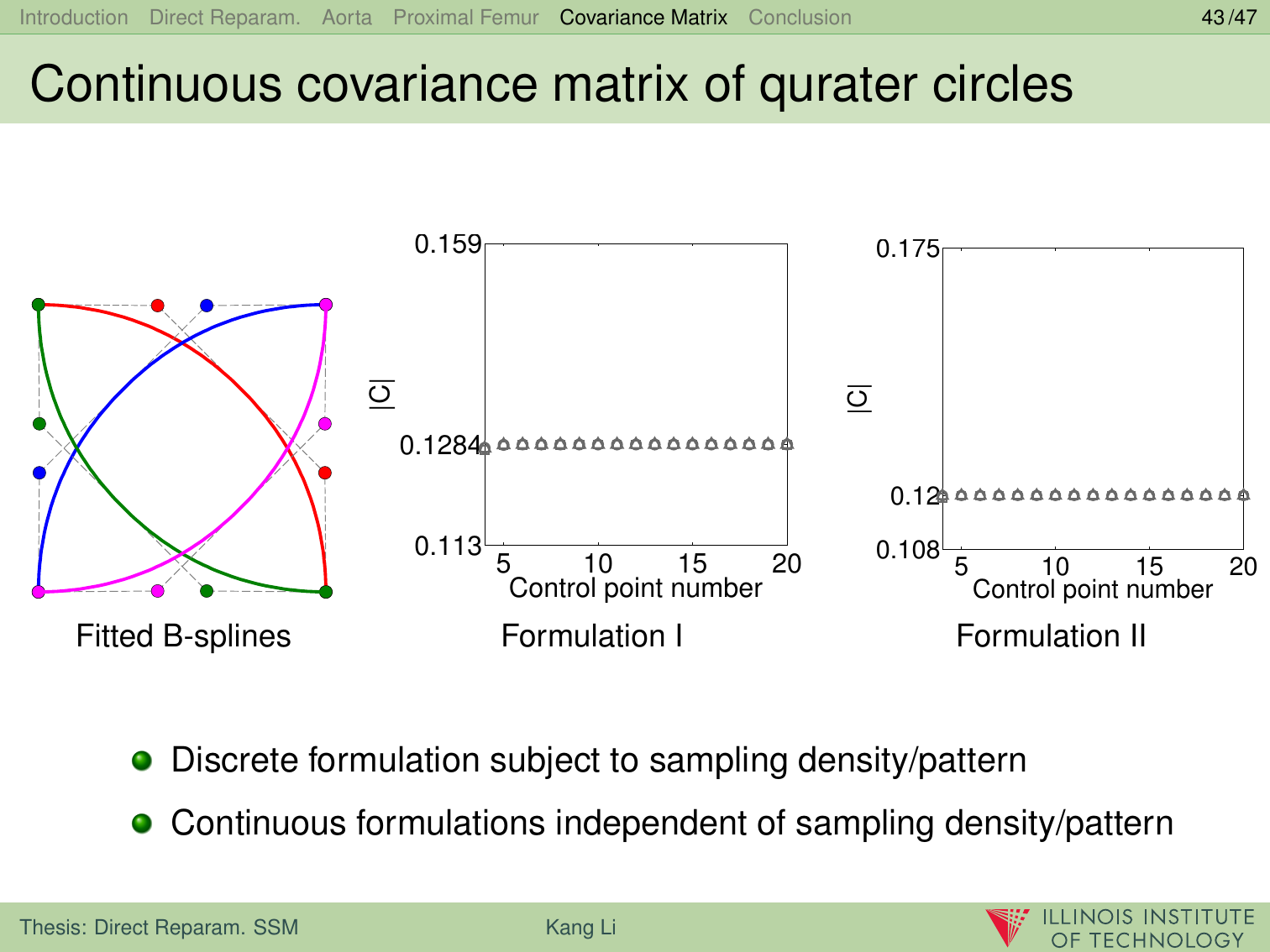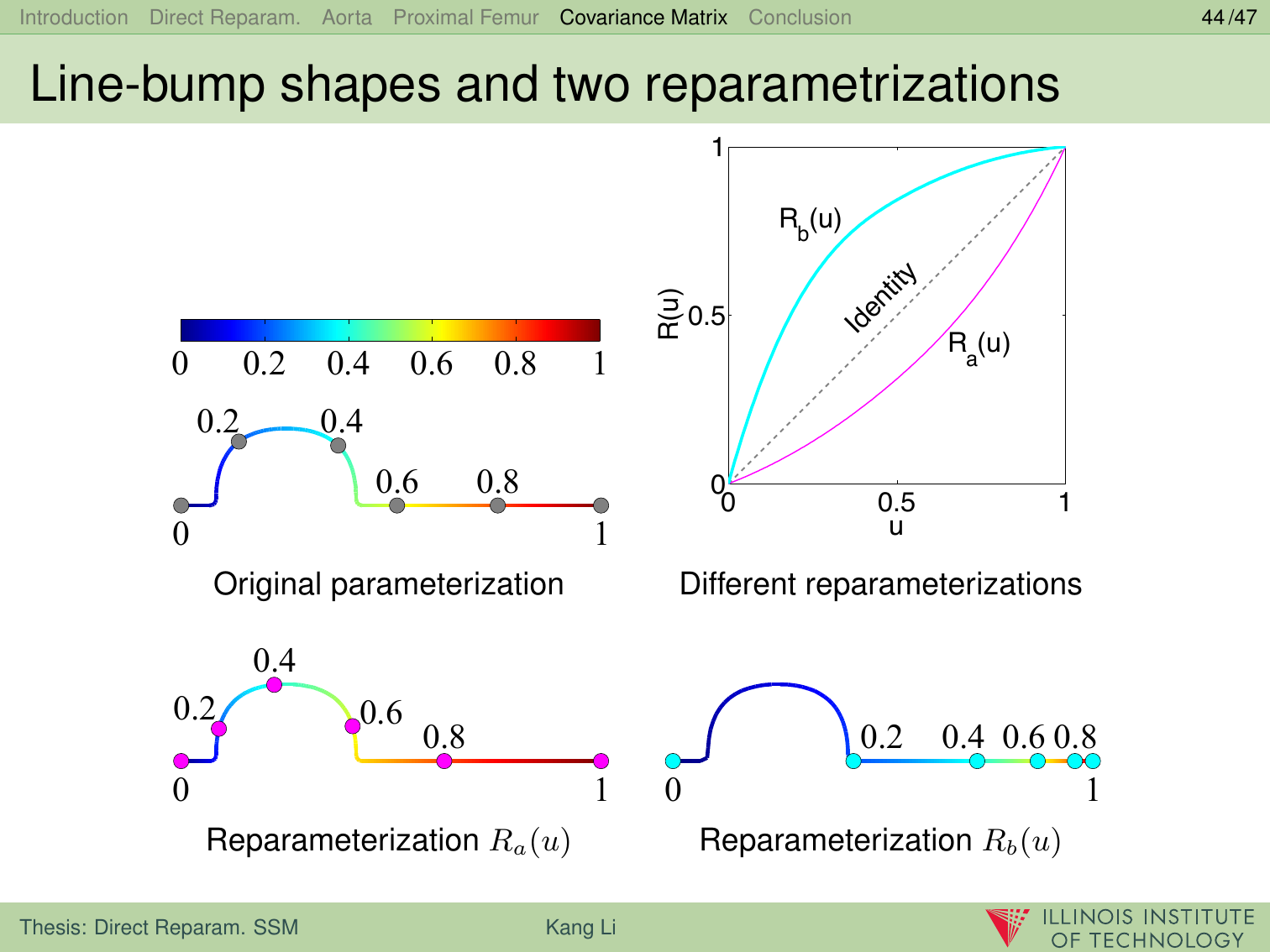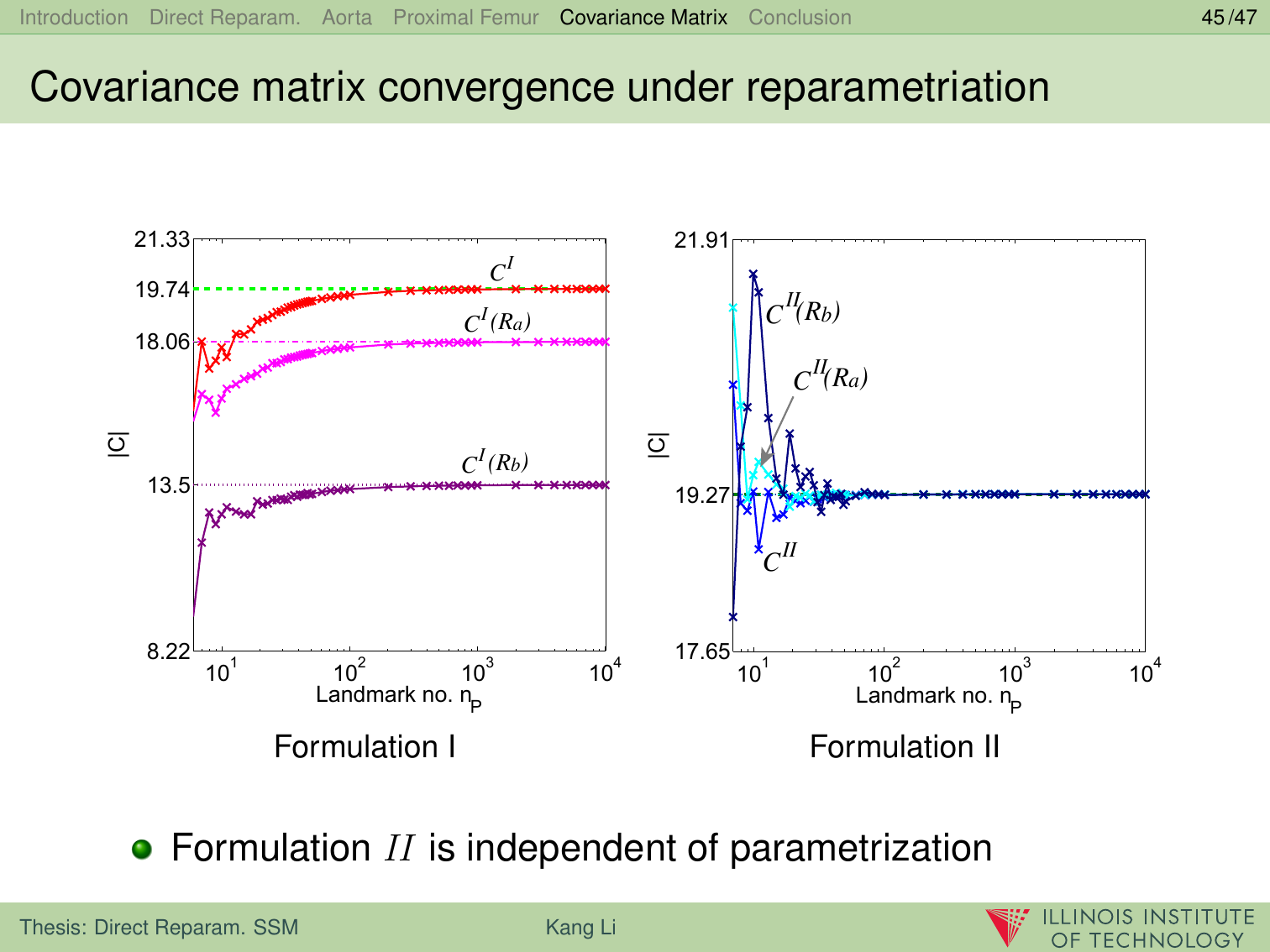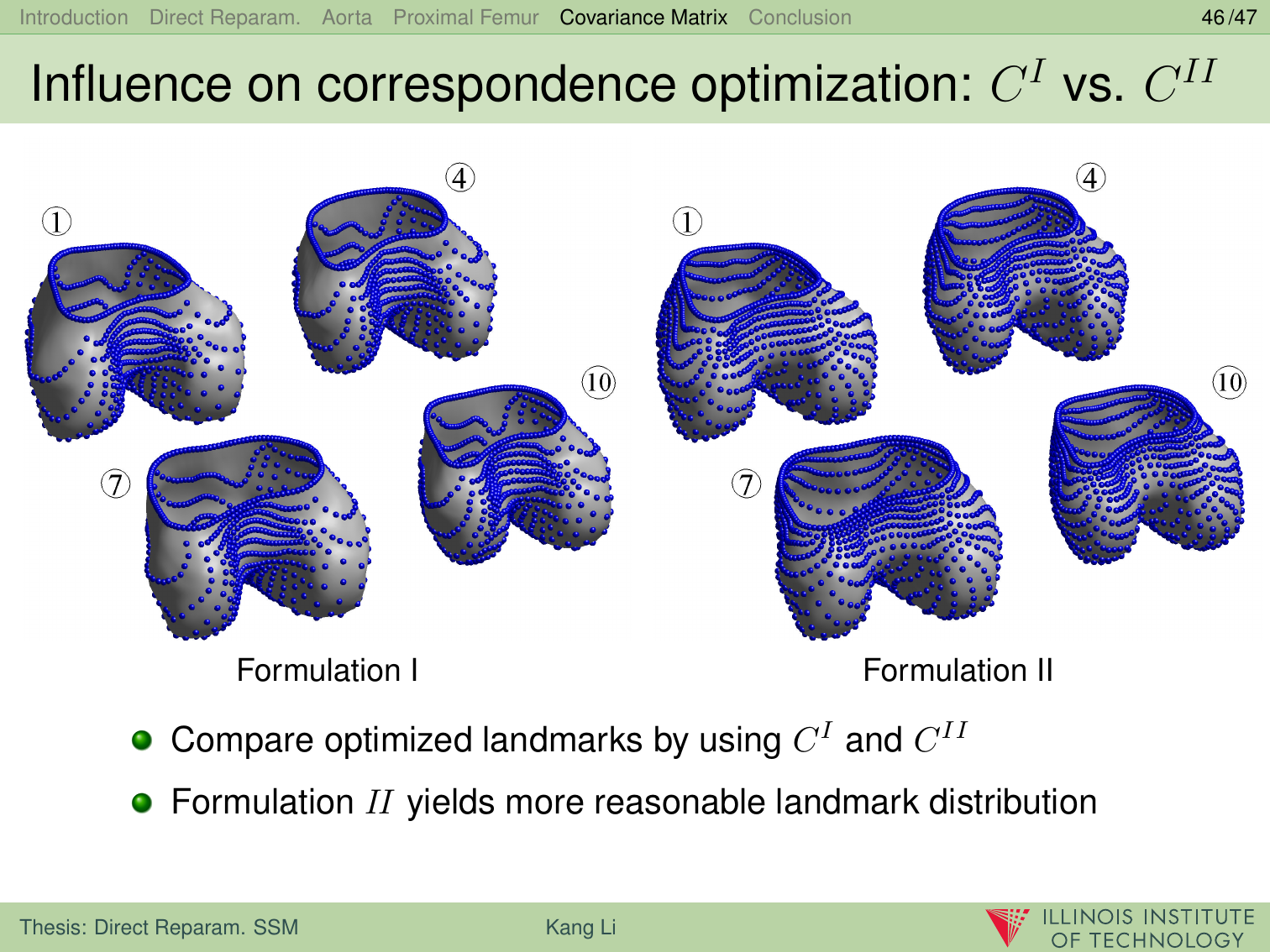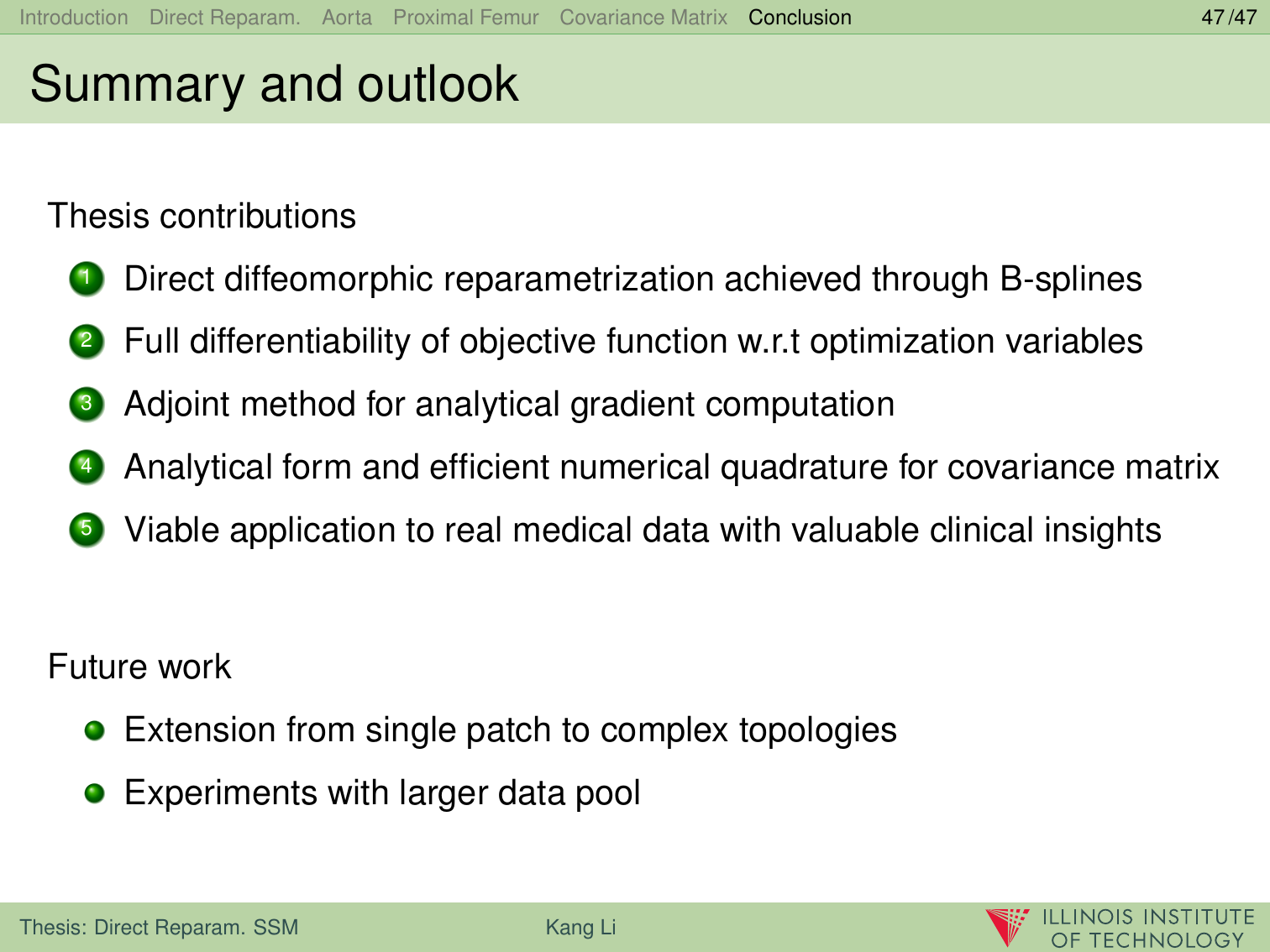| Previous |
Submitted to Illinois Institute Of Technology, May 2015
Demo

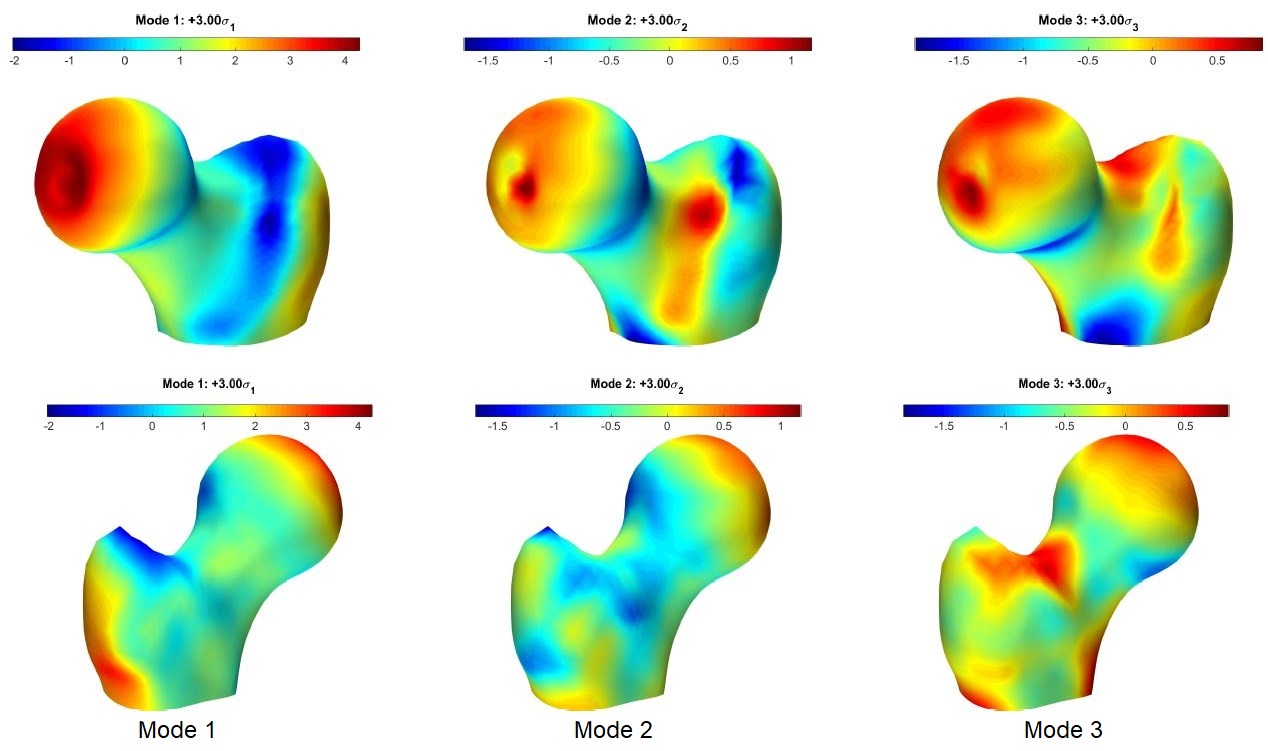
Abstract
This dissertation proposes an efficient optimization approach for obtaining shape correspondence across a group of objects for statistical shape modeling. With each shape represented in a B-spline based parametric form, the correspondence across the shape population is cast as an issue of seeking a reparametrization for each shape so that a quality measure of the resulting shape correspondence across the group is optimized. The quality measure is the description length of covariance matrix of the shape population, with landmarks sampled on each shape. The movement of landmarks on each B-spline shape is controlled by the reparameterization of the B-spline shape. The reparameterization itself is also represented with B-splines and B-spline coefficients are used as optimization parameters. We have developed formulations for ensuring the bijectivity of the reparameterization. A gradient-based optimization approach is developed, including techniques such as constraint aggregation and adjoint senstivity for efficient, direct di↵eomorphic reparameterization of landmarks to improve the group-wise shape correspondence. Numerical experiments on both synthetic and real 2D and 3D data sets demonstrate the efficiency and e↵ectiveness of the proposed approach.

